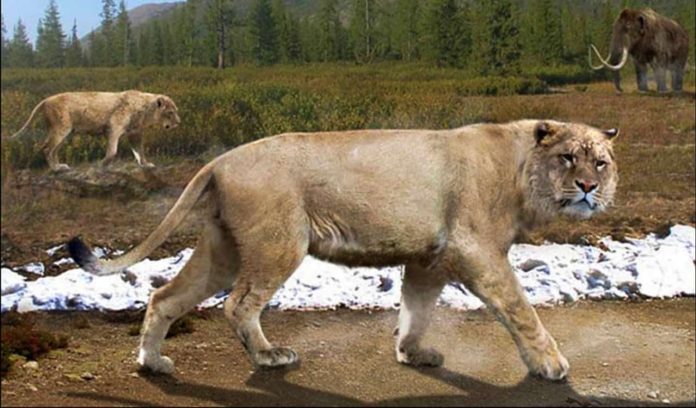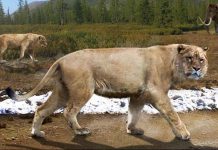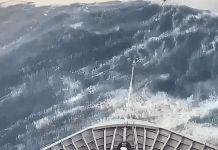When it comes to the world of prehistoric animals, there are some absolutely terrifying creatures. Some happen to be ancestors to much smaller creatures that would never affect us today. Meanwhile, others are ancestors to creatures still deadly to humans in present day. The real thing about the most threatening prehistoric predators known to man is that each one is massive. Back in their eras, oxygen levels were much much higher than they are today. These levels allowed for creatures to grow to unimaginable sizes.
Even as we leave the era of the dinosaurs, creatures are still experiencing great oxygen levels to improve their size. This would change about a million years ago to slowly go down to the numbers we experience today. We thought it might be interesting to look back at these amazing prehistoric predators and shine a light on a lot of them. While there will be some dinosaurs on the list, there will be many that are not related to them, in spite of movies getting that wrong a lot. In fact, some did not go extinct until well after homo sapiens existed.

American Cave Lion
- Historic Period: Pleistocene epoch and the early Holocene epoch
Larger than African and Asian Lions today, the American Cave Lion was known for being a top predator during its time period on the planet. As the name suggests, most were found in the Americas. The European Lion, a cousin to the American, was around the same size with the American being a little bigger. This, in effect, makes it the largest lion species in history. For those wondering, it has no relation to the American Mountain Lion, also known as the Puma.
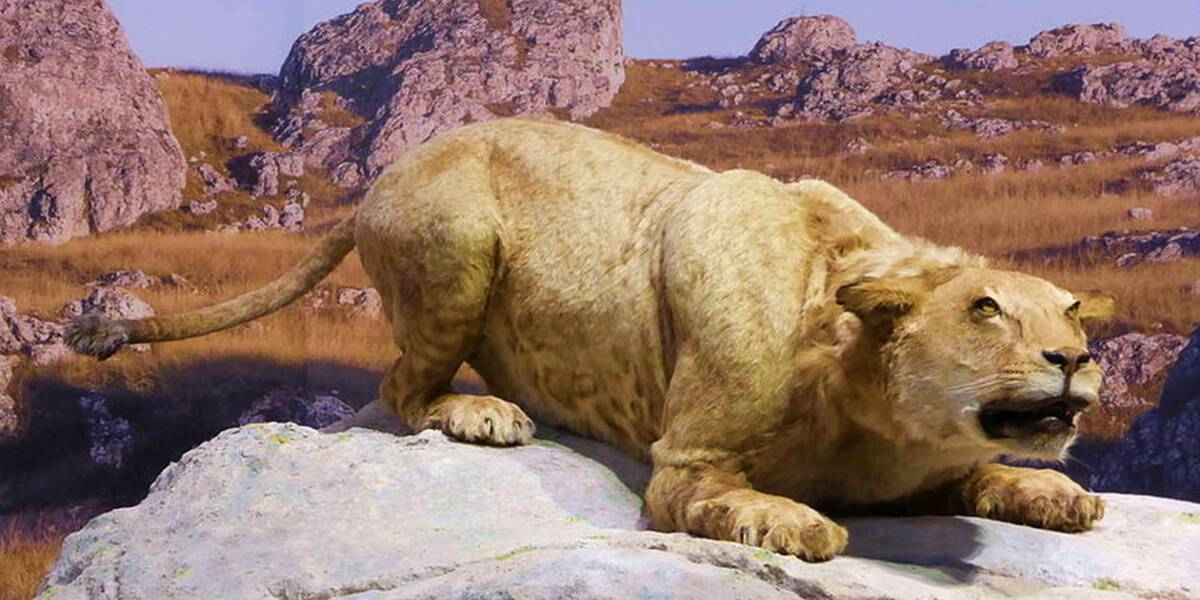
Pumas are part of their own species whereas the American Cave Lion is part of the Panthera line of big cats. It is said to have lived up until around 10,000 years ago, which means it very well could have interacted with humans. It still counts as prehistoric in spite of this, due to first showing up around 340,000 years ago. That said, it was one of the most threatening prehistoric predators that early humans had to fear.
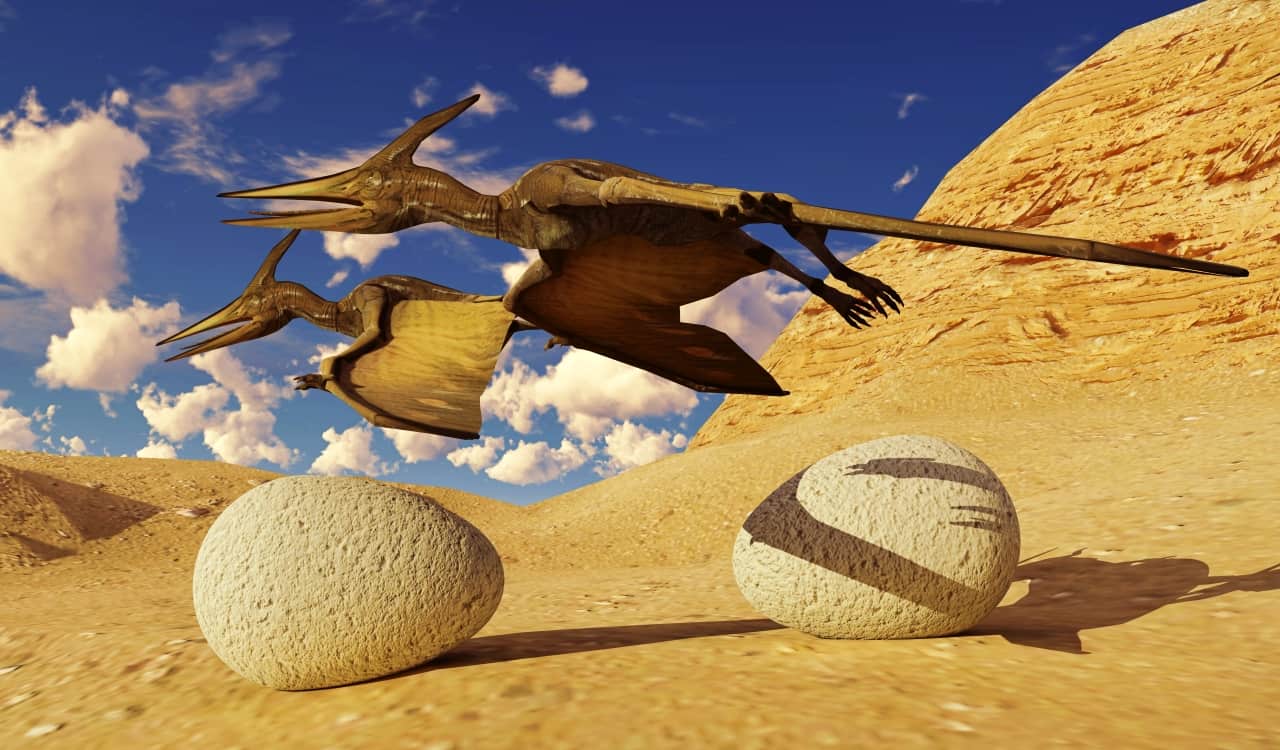
Pterosaurs
- Historic Period: Late Triassic to End of Cretaceous
A lot of people get this confused, but the Pterosaurs is not a dinosaur nor the ancestors of birds. They were flying reptiles that conquered the skies from the late Triassic to the Cretaceous period, which means they lived during most of the Mesozoic era and went extinct about 66 million years ago.
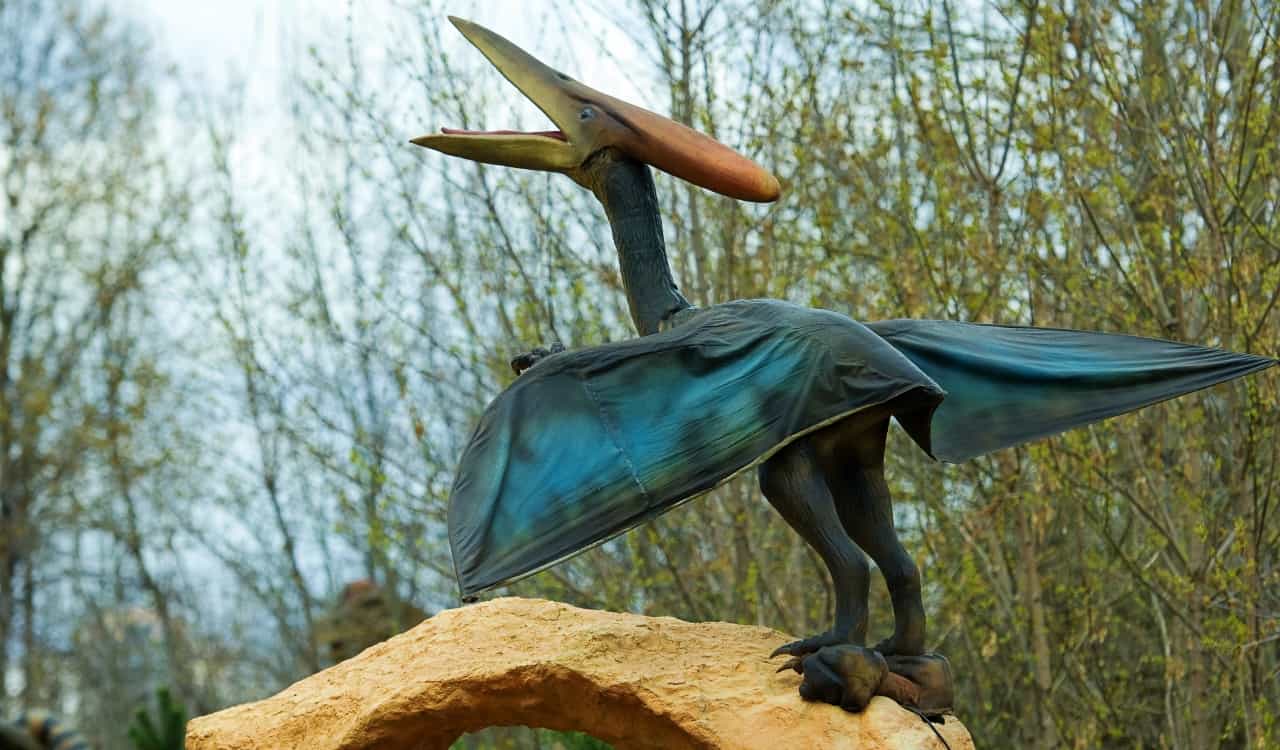
They could fly with wings that were incredibly strong. Like large birds you see today, the species had razor-sharp talons that could rip through pretty much anything. It did not stop there, as they had a large beak with sharp teeth that could crunch bones. If we lived during their time, the Pterosaurs would be one of the most threatening prehistoric predators in existence.
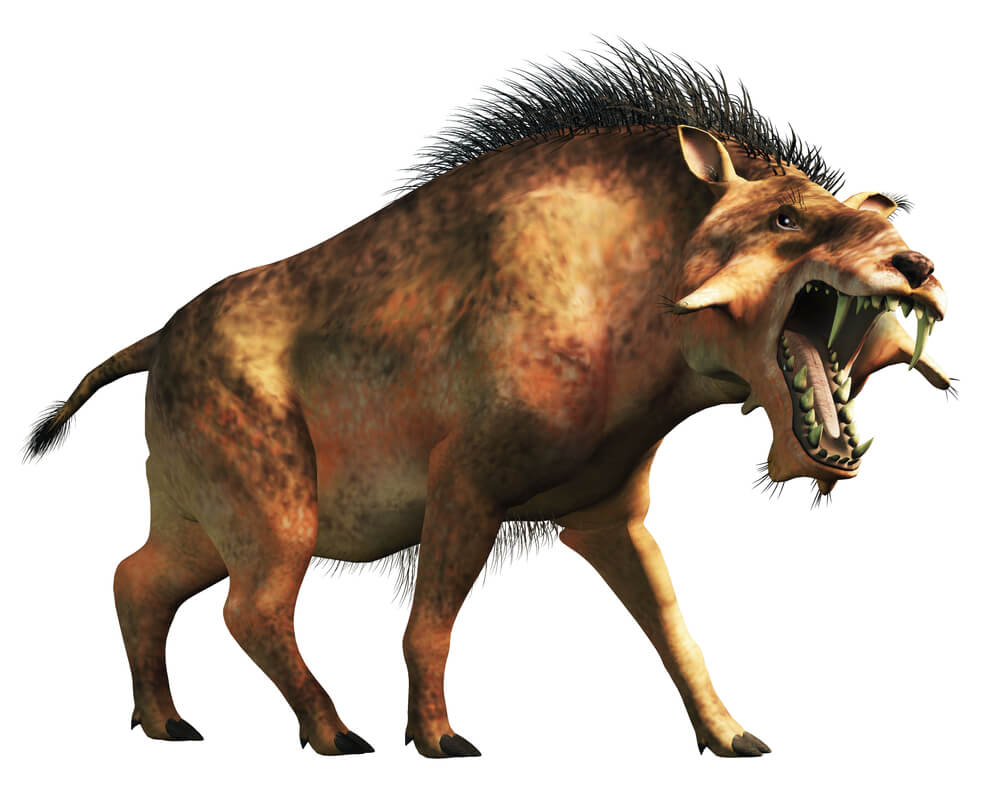
Daeodon
- Historic Period: Oligocene and Miocene epochs
The Daeodon species is believed to have existed in North America up until just under 16 million years ago. Fossils have been found all over the United States, making the Daeodon quite notable for being capable of existing in nearly any climate. In spite of the broad territory it happened to exist in, the species was not abundant. Even at its height, the species was never as common as other major creatures during its time. The Daeodon is essentially an incredibly large pig.
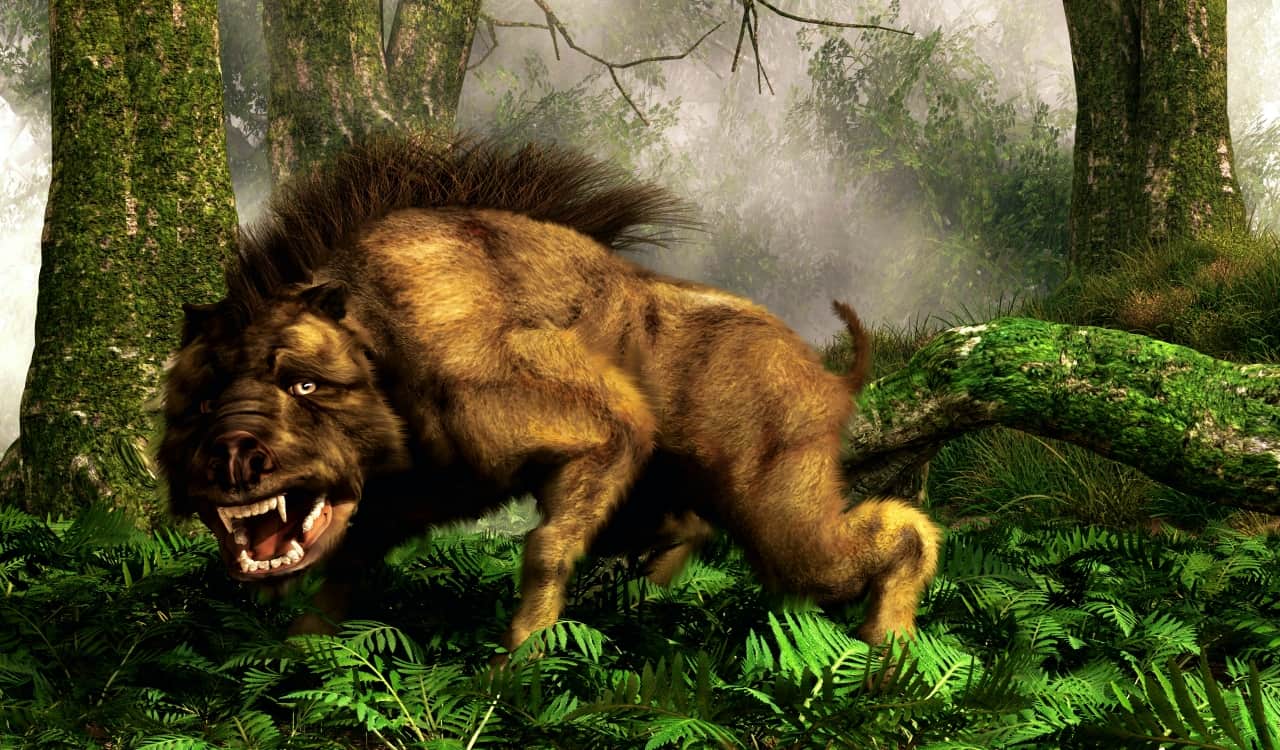
Yet this pig was not like the barn animal you know from your local farm. It was incredibly large with skulls around three feet in length, with the appearance to that of a Warhog. They also stood just under six feet tall. The name “Daeodon” comes from the Greek word “hostile.” Making one clearly aware of it being among the most threatening prehistoric predators. Many could relate its size and appearance to that of a Bison or Rhino, due to its large muscular frame.
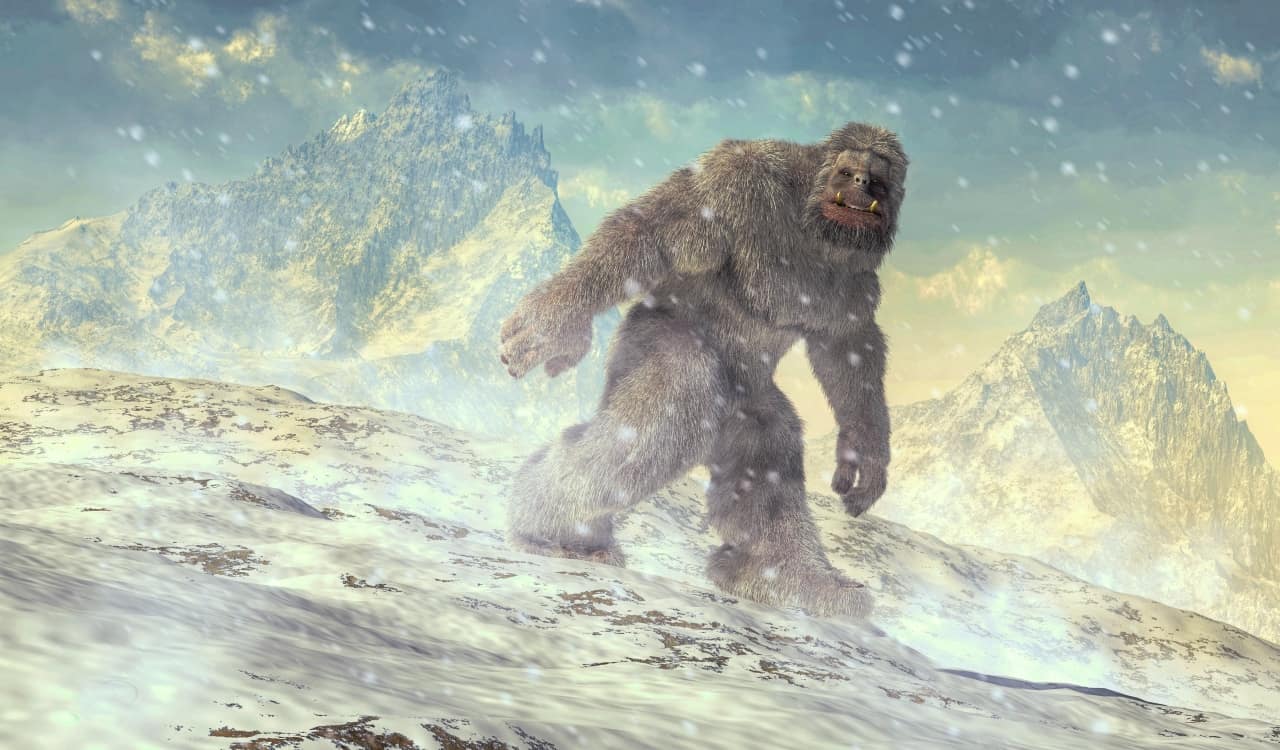
Gigantopithecus
- Historic Period: Early to Middle Pleistocene
We’re sort of cheating here, but we could not help but put this one on the list. You could actually call it the original Sasquatch due to its incredibly similar appearance. The Gigantopithecus has a remarkable connection to us due to also being a primate species. Yet it diverts a little from an evolutionary standpoint and was a giant version of an Ape or Orangutan. It was incredibly large and is said to have likely walked on two legs while being covered in hair.
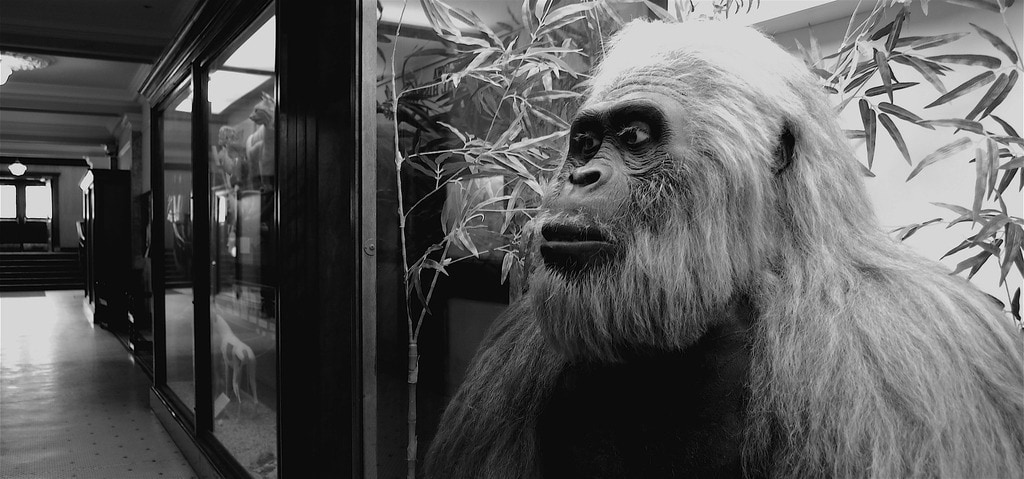
In fact, this connects so much to humans that one of our ancestors, the Homo Erectus, likely looked nearly exact. They differ in that Gigantopithecus was much larger. Some even believe this creature lives today in the form of the Yeti or Big Foot. If we did have such a mysterious creature, this species would certainly fit the bill. It is literally an exact copy of the normal description. It went extinct roughly 300,000 years ago yet it was clearly one of the most threatening prehistoric predators.
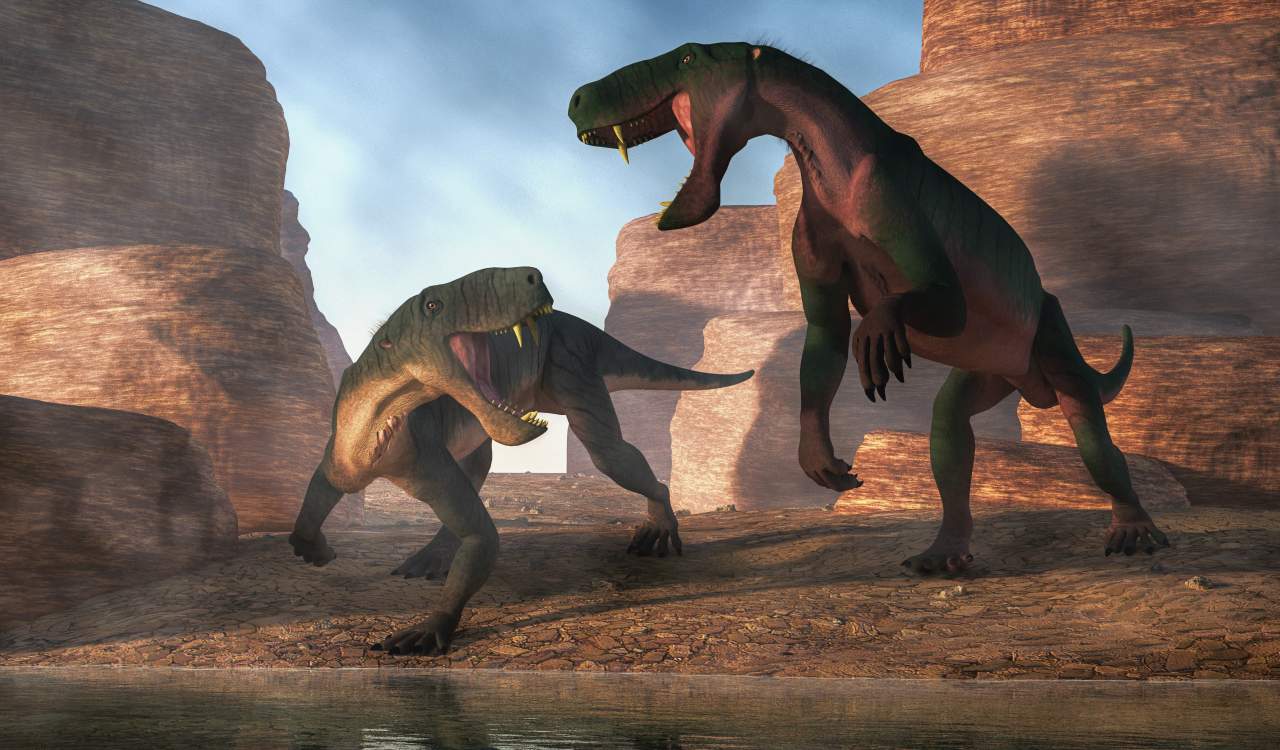
Gorgonops
- Historic Period: Late Permian
The Gorgonops are quite an impressive species. They lived during the Late Permian era and were among the most dominant predators of their time. Obviously, that is why they are on our list of the most threatening prehistoric predators. Some would call them “apex” for their time, and that would make sense. Yet, they were likely not as major predatorily speaking, mostly due to living 255 to 260 million years ago.
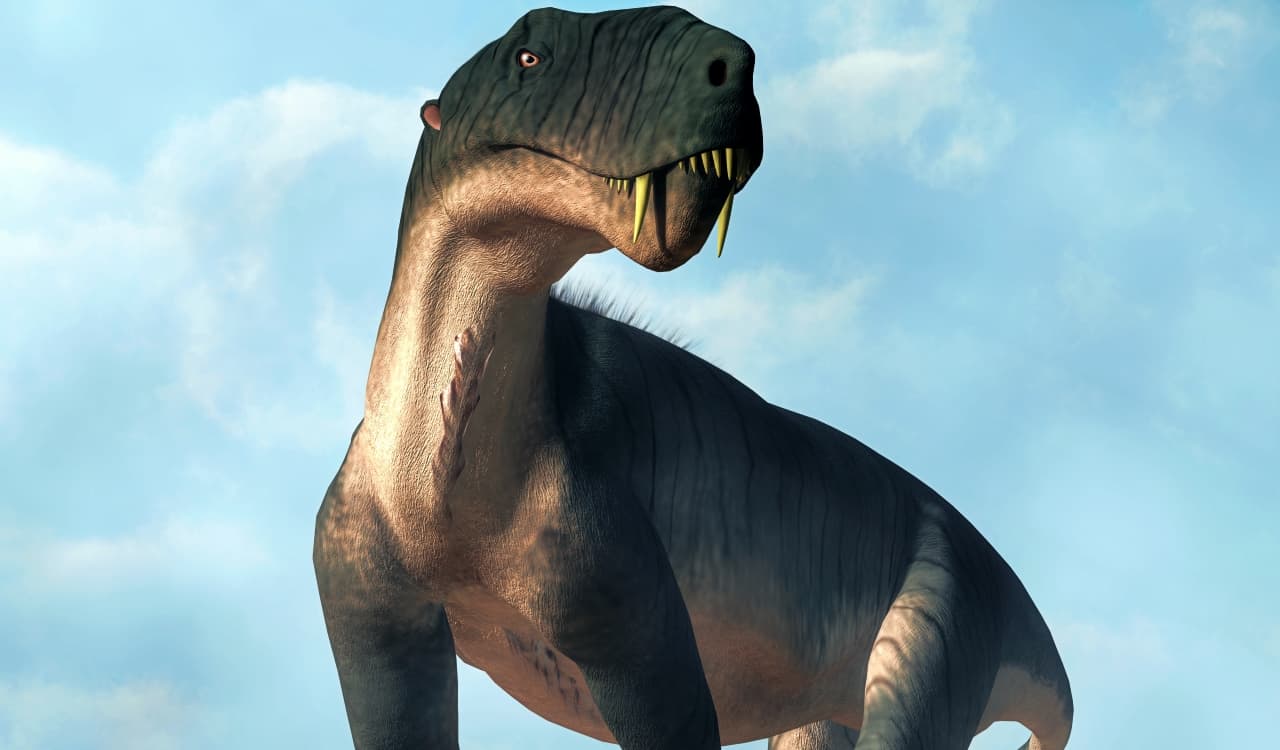
This time period had tons of large and threatening predators, some of which could take down the Gorgonops. Yet they often worked in packs, making it harder for predators to take them down before they took it down. They were pretty big, growing in a length of up to three meters (just under 10 ft). Their teeth were incredibly sharp, so much so, that they could tear into some of the toughest hides of their time. Gorgonops were also likely quick for their size, making them a tough predator to beat.
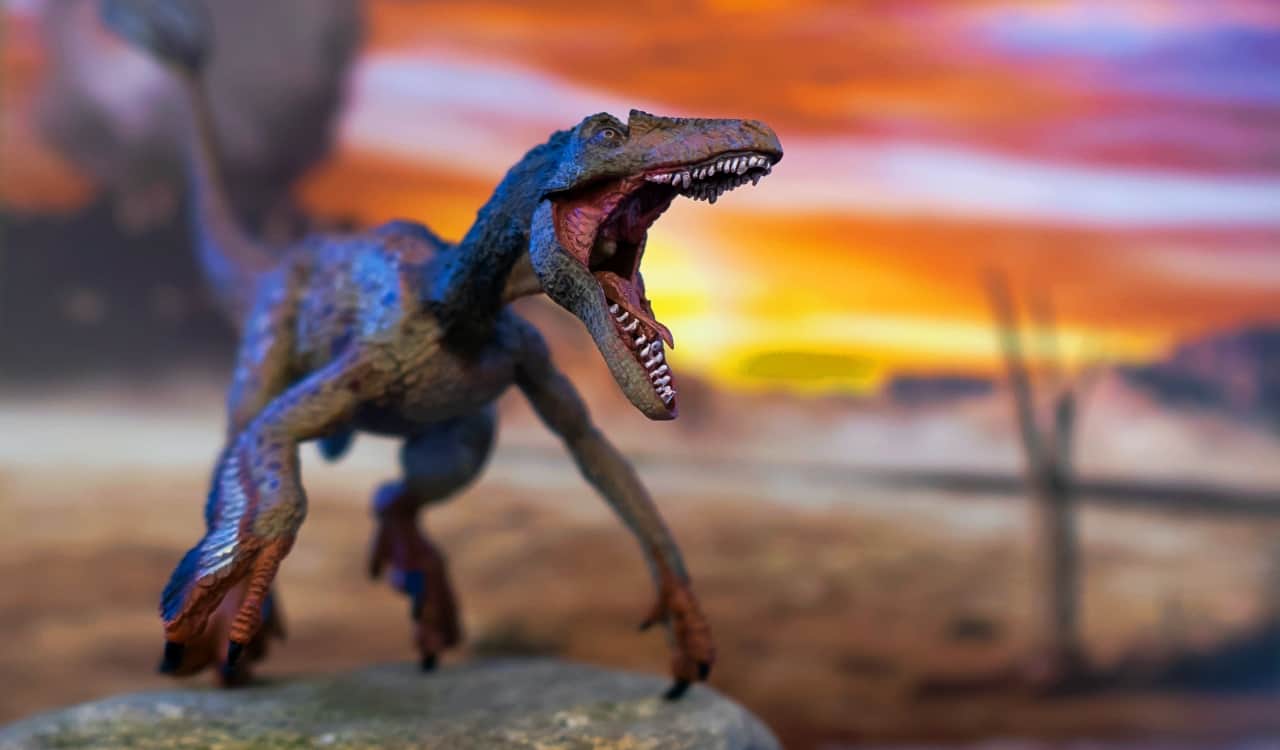
Dromaeosauridae (Raptors)
- Historic Period: Middle Jurassic to End of Cretaceous
Raptors as we tend to see them in movies just did not exist. Like all dinosaurs, they were mostly connected to birds of our time than reptiles. Due to their look in films, we tend to assume “reptile” for understandable reasons. Yet a while back we found out that the bird connection was fact, so they likely ran around with feathery bodies. The Raptor we know from back in the Jurassic era is connected to the very same predatory bird species of the same name.
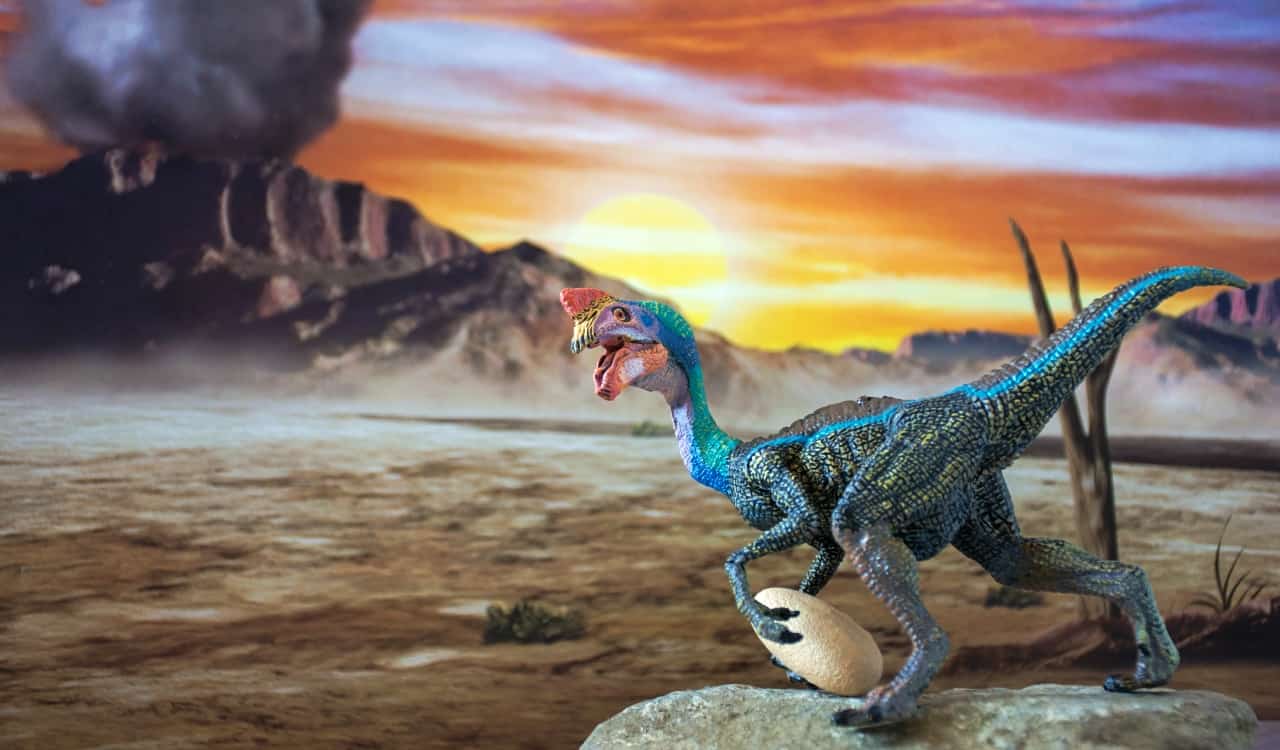
The species was very widespread, with proof of their existence on every continent, including Antarctica! Keep in mind, the land was closer together in their time. Pangea, the time when our landmass was all connected, began to separate roughly 170 million years ago. Raptors first appeared 167 million years ago. This is why they are so widespread. Raptors were certainly among the most threatening prehistoric predators. They were strong, fast, and had razor-sharp teeth with incredibly strong claws.
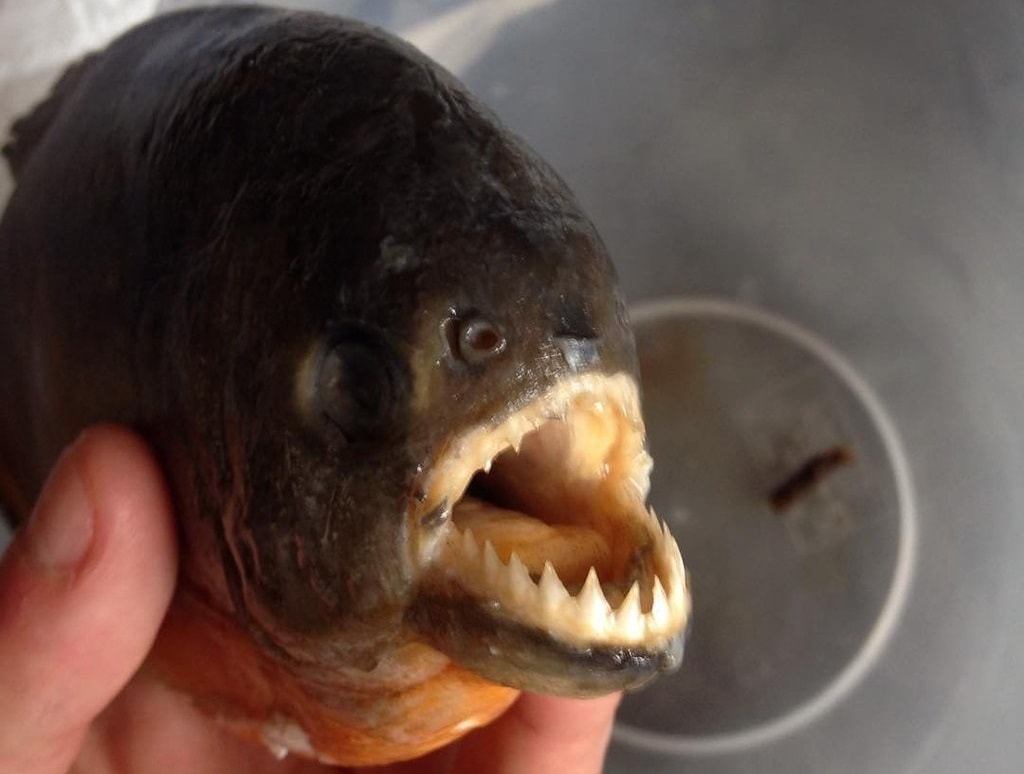
Megapiranha
- Historic Period: Late Miocene
If you want to see one of the most threatening prehistoric predators in history, it’s truly hard to look over the Megapiranha. It is exactly as it sounds, this is an incredibly large Piranha. They were last seen on the planet roughly 8-10 million years ago and were mostly found in the ocean near Argentina. While most piranhas are relatively small, this massive version was about 28 inches in length and roughly 22 lbs.
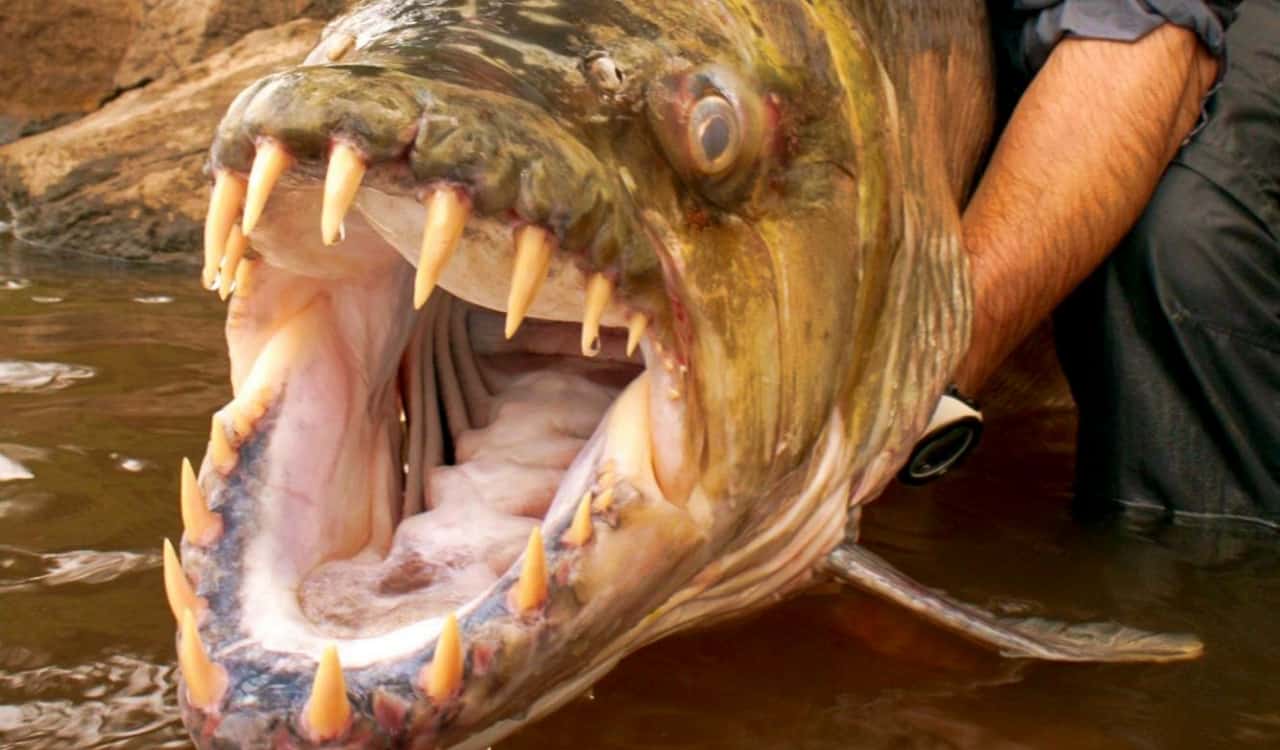
They were more powerful than a normal piranha we see today, while also keeping those razor-sharp teeth that we know the species for today. Their teeth were organized in a zigzag, double row. This differs from the one row we see in the modern piranha. This suggests that the bite force they had was anywhere between 279 to 1,068 pounds. This is on pace with some large predatory cats of today.
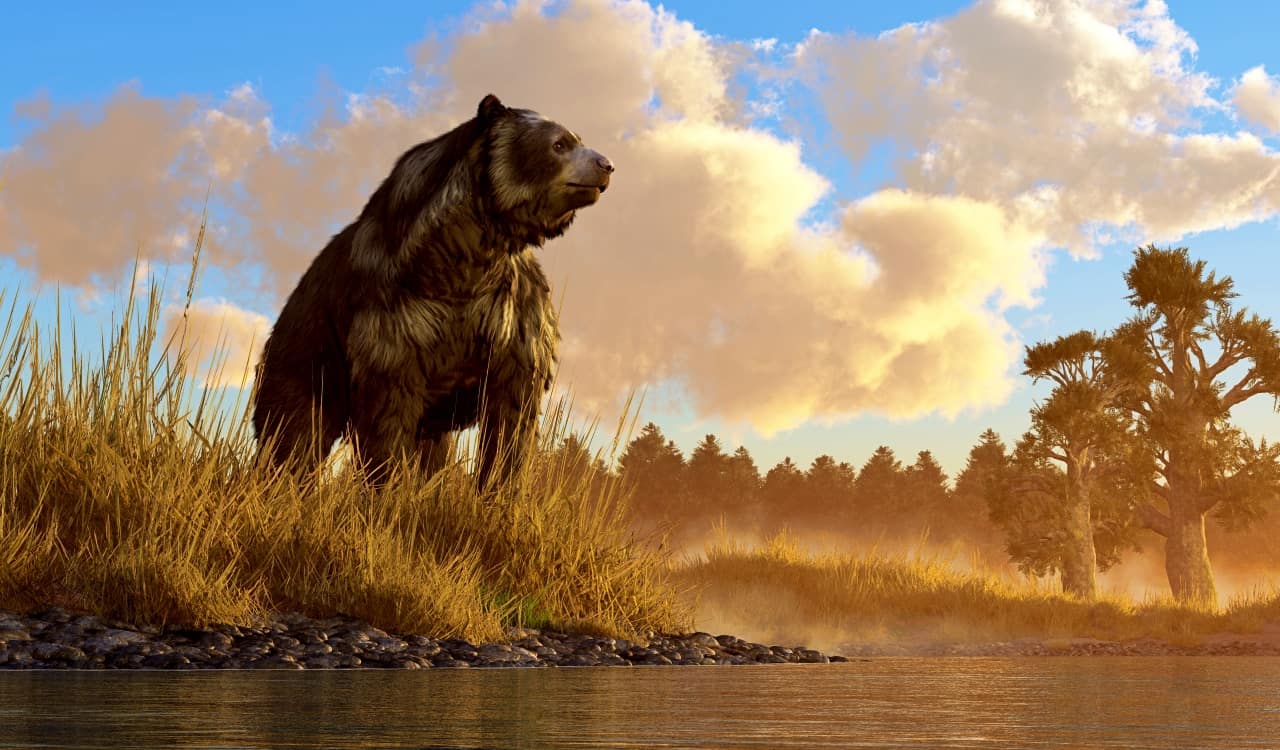
Short-Faced Bear
- Historic Period: Pleistocene Epoch
The Short-Faced Bear was around during the time of humans, with many living up until roughly 12,000 years ago. It is said that their rapid disappearance and eventual extinction are connected to the Younger Dryas period. This was a time when the Earth began to go through a global cooling phase. It began roughly 10,900 B.C. and led to the extinction of several animals, not just this specific bear species.

There were several types of short-face bear, but perhaps the most famous is the Atlas Bear. It happens to be known as one of the largest bears to ever exist. It is said that there are several different types of bears in the “short-face” area but it was the giant version many had to fear. Science knows it to be one of the most dangerous carnivores in history, certainly making it one of the most threatening prehistoric predators. The Atlas bear was said to have been nine feet long and weighed up to 1,000 pounds (450 kg).
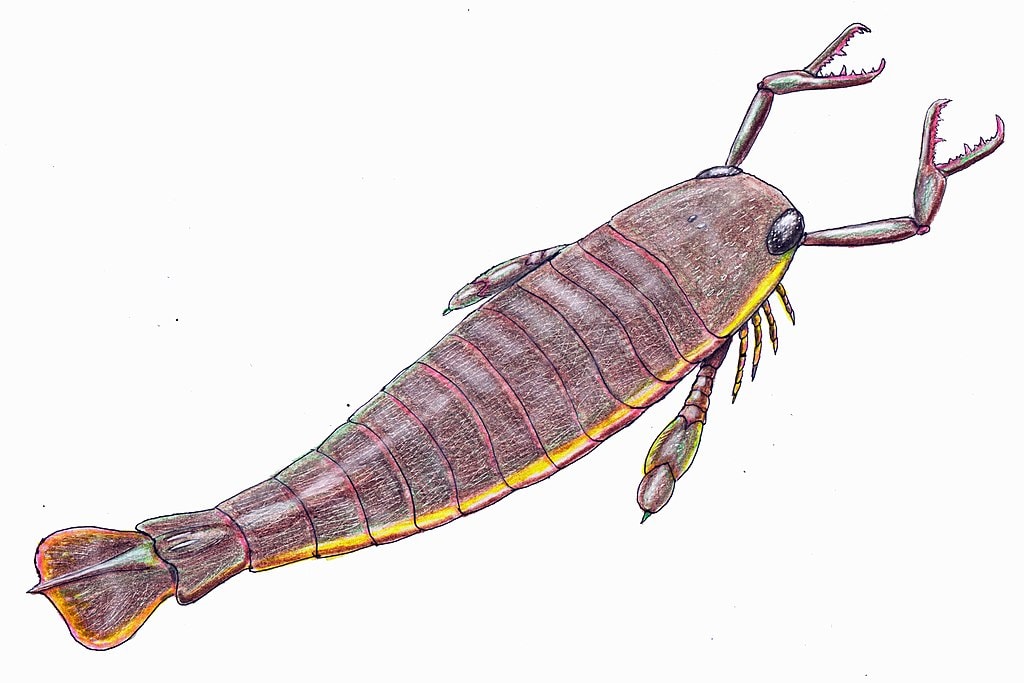
Jaekelopterus
- Historic Period: Early Devonian
The Jaekelopterus is one of the most interesting-looking prehistoric creatures to ever exist. We’re not sure if it’s supposed to be a shrimp lobster or some sort of mysterious hybrid of all our worst dreams. They lived roughly 400 million years ago and were clearly among the most threatening prehistoric predators in the ocean. They measured out to around eight feet in length, containing massive, spiked claws.
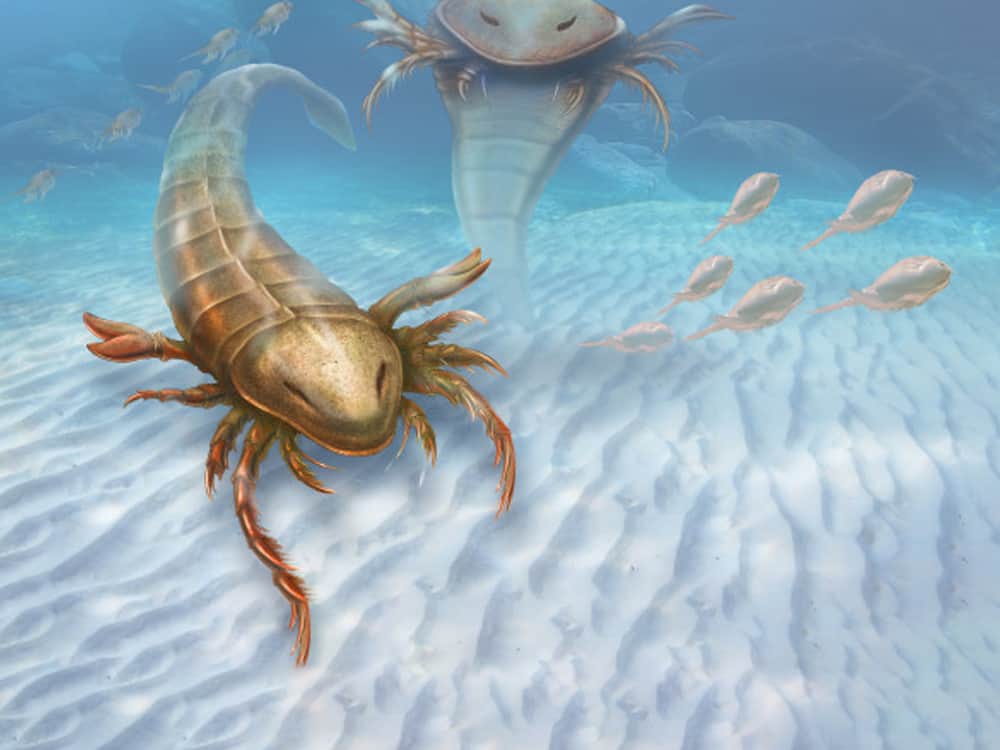
These claws were not just for decoration, rather, like modern lobsters, they could be used to catch pretty much anything they chose to take down. It should not shock you to find out that this species is actually an arthropod. Others in this species line include insects as well as crabs. Of course, the Jaekelopterus is the largest arthropod to have ever existed. If humankind had lived during its time, they very likely would have eaten us for dinner like we were nothing.
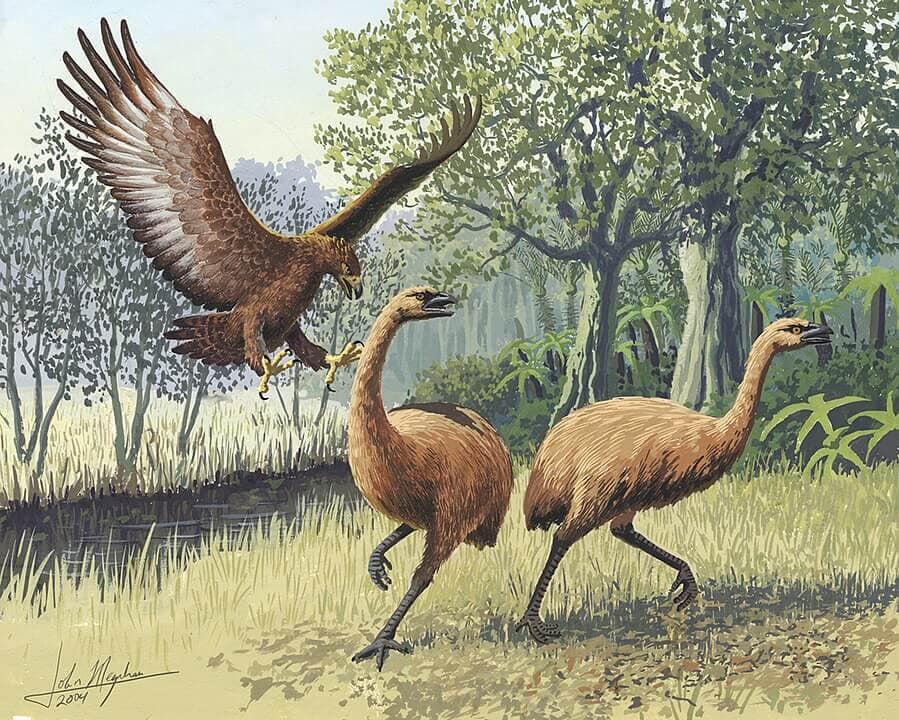
Haast’s Eagle
- Historic Period: Pleistocene Epoch
Some will likely come into the comment section and say, there’s no way the Haast’s Eagle is one of the most threatening prehistoric predators. After all, it is not truly prehistoric! Yet this is not exactly true, as the Haast’s Eagle lived for what was said to be several thousands of years. They died out officially around 1400 AD, and this was a direct result of the Māori people. This was the first civilization of people that came to what is now modern-day New Zealand.
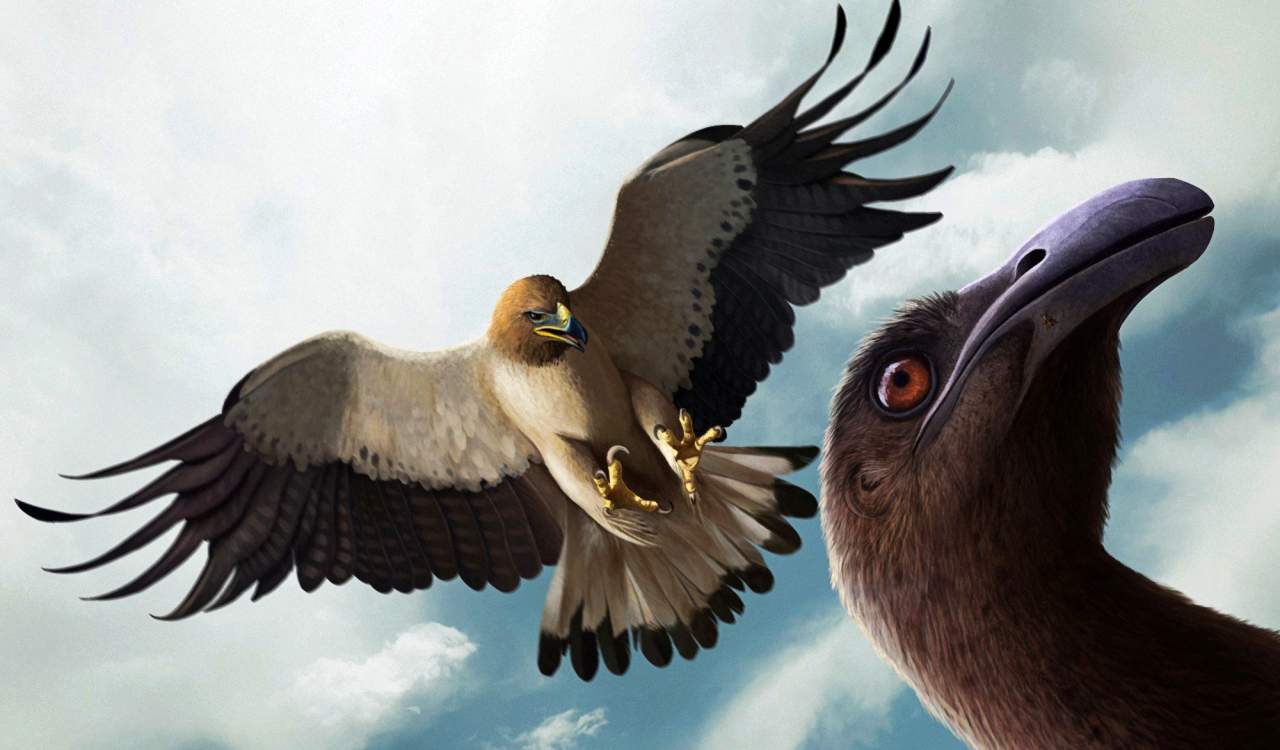
They were incredibly large birds, the largest in history, and specifically targeted the also extinct Moa species for food. This bird was also hunted to extinction by the Māori people, cutting the Haast’s Eagle’s food source heavily. The giant bird did not often target humans but it was certainly large enough to make us a meal. Due to their clear size and speed, they were huge threats. Of course, the species lived for thousands of years just fine before mankind took them out.
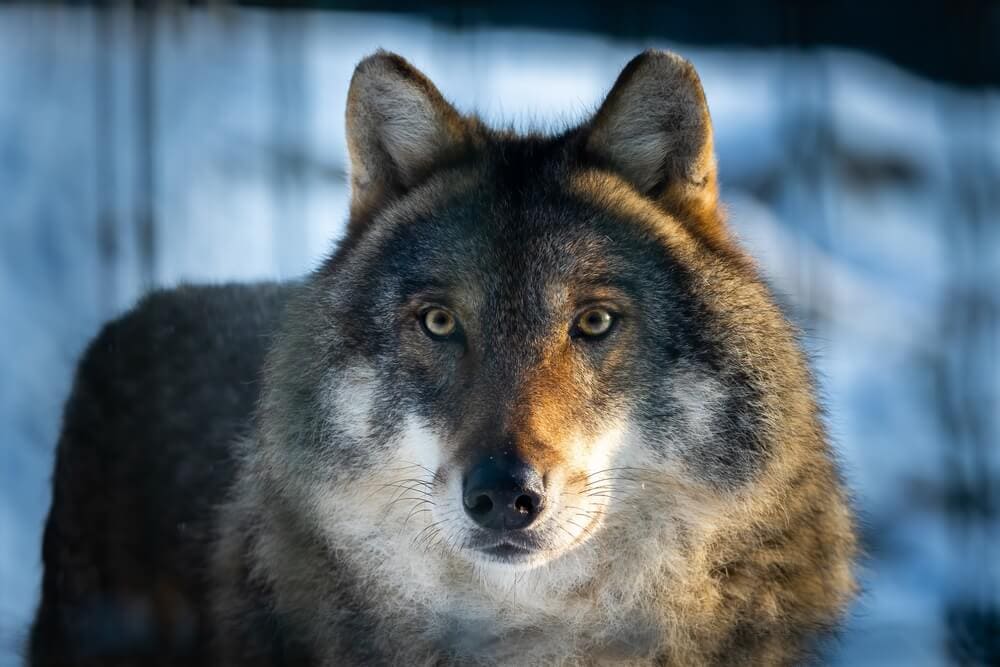
Dire Wolves
- Historic Period: Late Pleistocene to Early Holocene Epochs
When you hear or see anything regarding Dire Wolves, you automatically think of them from fantasy movies or television shows. The shows get them somewhat accurate, allowing them to usually look a lot like a normal wolf but much larger than any you’d see today. Their fossils certainly prove this to be the case, as they were most certainly large creatures in their time. In fact, they are the largest species of wolf and among the largest canine species pound-for-pound.
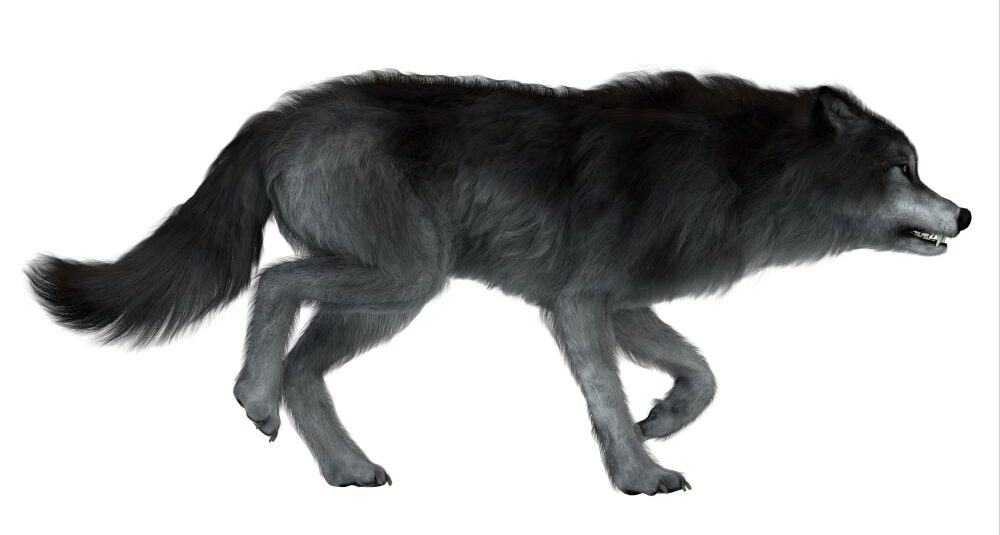
They went extinct in the early Holocene period, just under 10,000 years ago. A lot of things led to their downfall, but the main reason is said to be climate change. Evolutionary factors led to this wolf species being far too large and nowhere near as quick as it needed to be. Other animals could easily escape the Dire Wolf species or outcompete them for food. That led to their decline as much as anything else. Yet when they were alive, they were among the most threatening prehistoric predators.
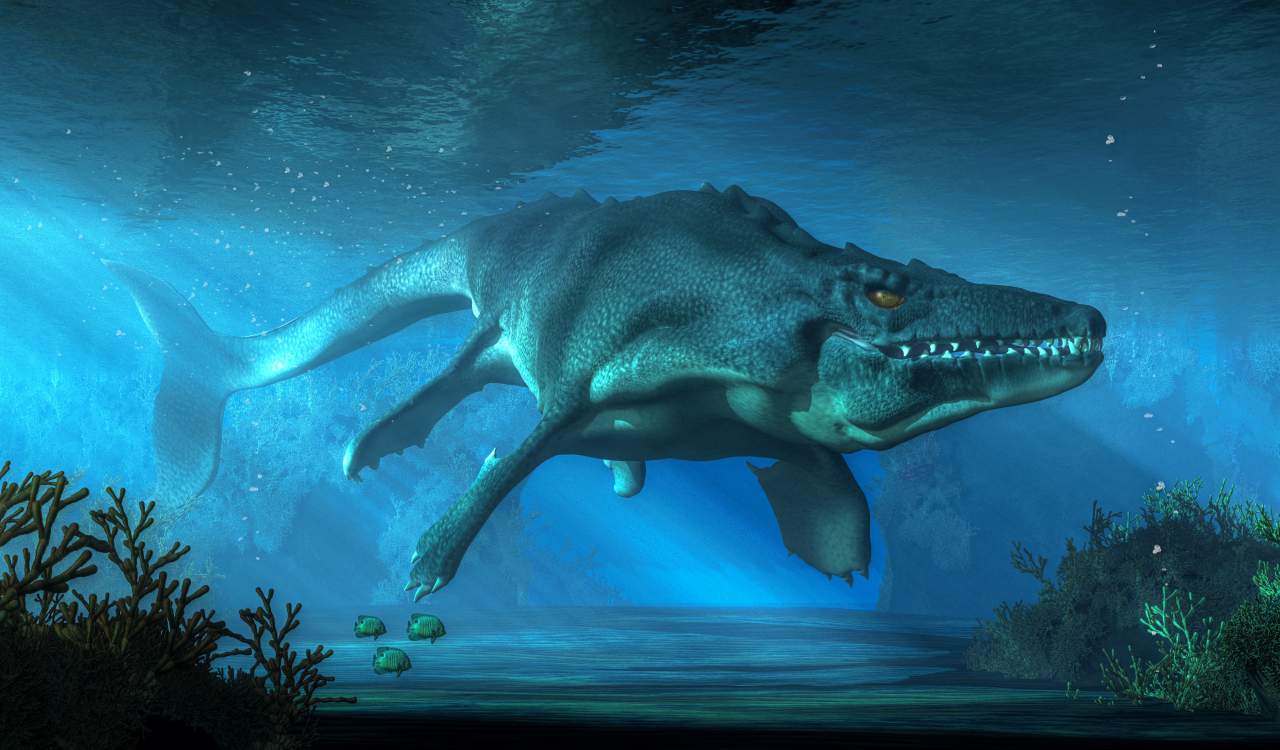
Mosasaurus
- Historic Period: Late Cretaceous
It’s very likely you are familiar with the Mosasaurus if you’ve seen the movie, Jurassic World. Remember the animal that jumped out of the water to attack another dinosaur flying through the air and even a shark in a Seaworld-like environment? If you know what we’re referencing here, then you certainly know what the Mosasaurus looks like. They were not technically like dinosaurs but did partially live among them.
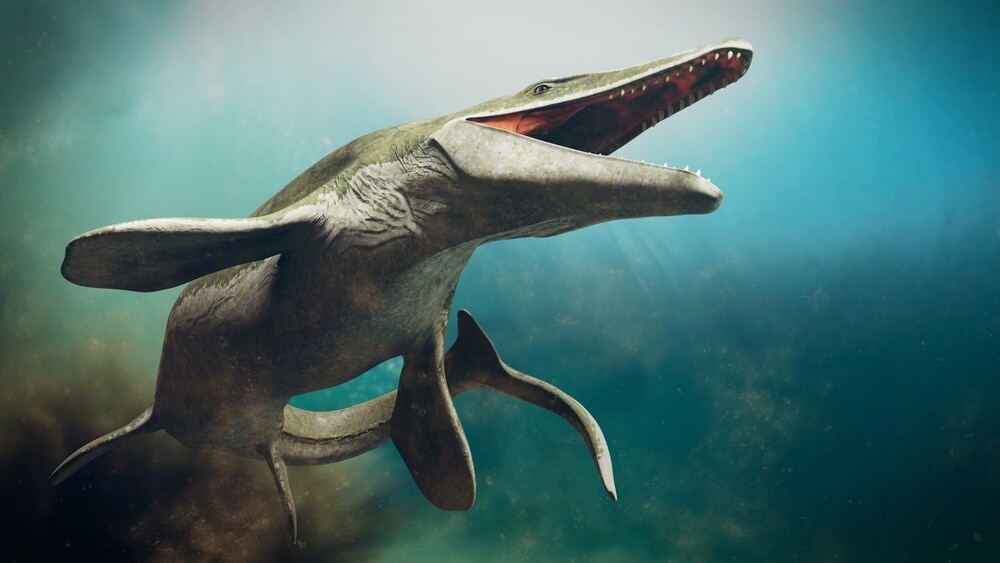
They were giant reptiles that had some impressive, destructive teeth. The Mosasaurus was bigger than many of the biggest land dinosaurs known. They were also quite different from other reptiles, even those that have a connection to within the reptilian community. Scientists discovered that baby Mosasaurus spent their early life in the open ocean, making some believe that the species gave birth to live young and not via eggs.
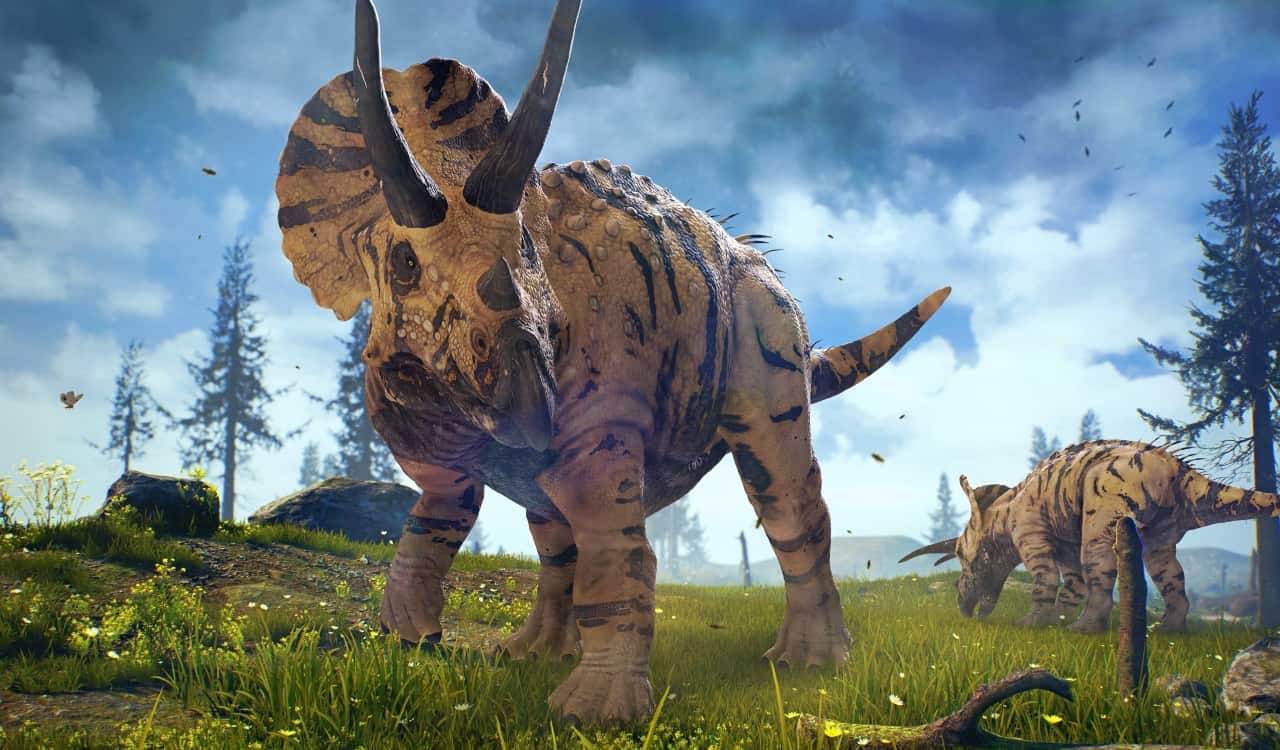
Triceratops
- Historic Period: Late Cretaceous
While some do not respect the infamous Triceratops creature, it was most certainly an apex threat in its time. The Triceratops was a herbivore, meaning they specifically ate plants or other vegetation. However, they were massive. They had three horns on their incredibly destructive head. This was perfect for defense and would be used a lot like how Rhinos use their horn to attack predators or other threats today.
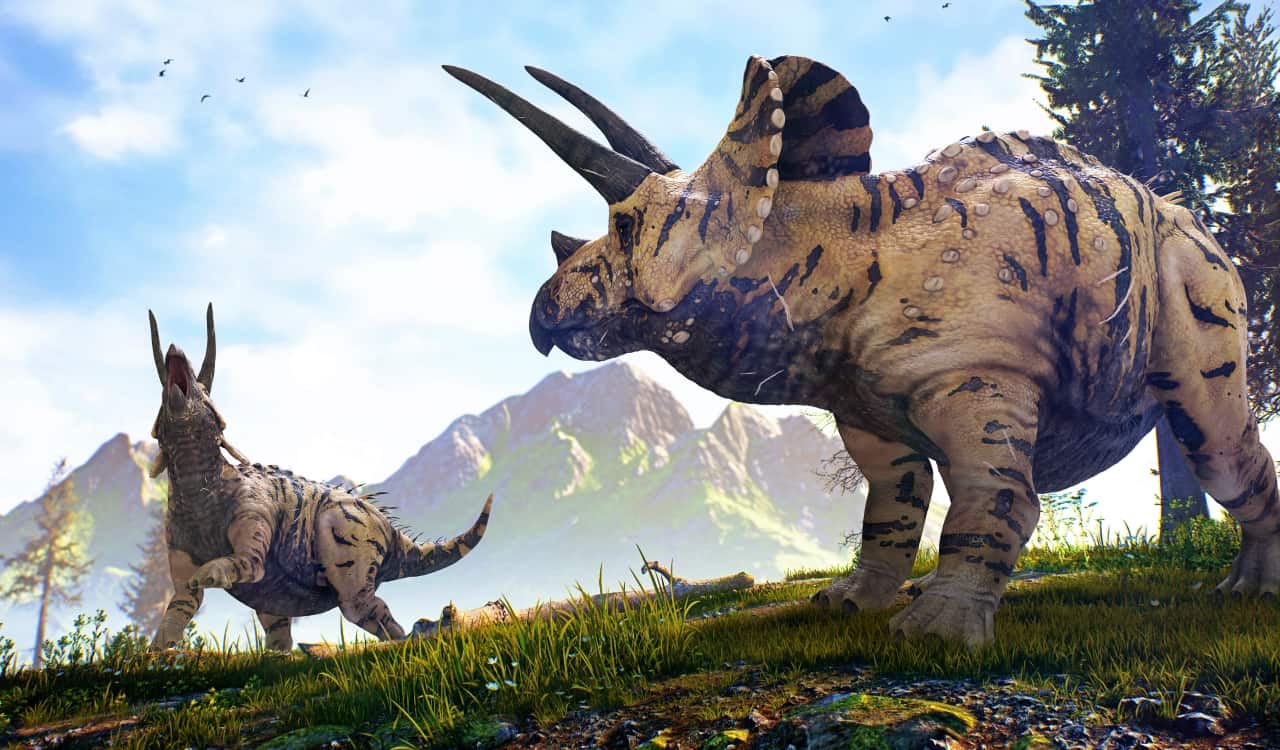
They also connect to Rhinos in how their bodies were formed. The Triceratops was large, four-legged, and had a muscular build that would have been packed with more meat. Their bodies were equipped to have handled several thousands of pounds of weight, which is likely around what they weighed. This is likely why so many feel Rhinos evolved from them, but they are not really related at all, funny enough.
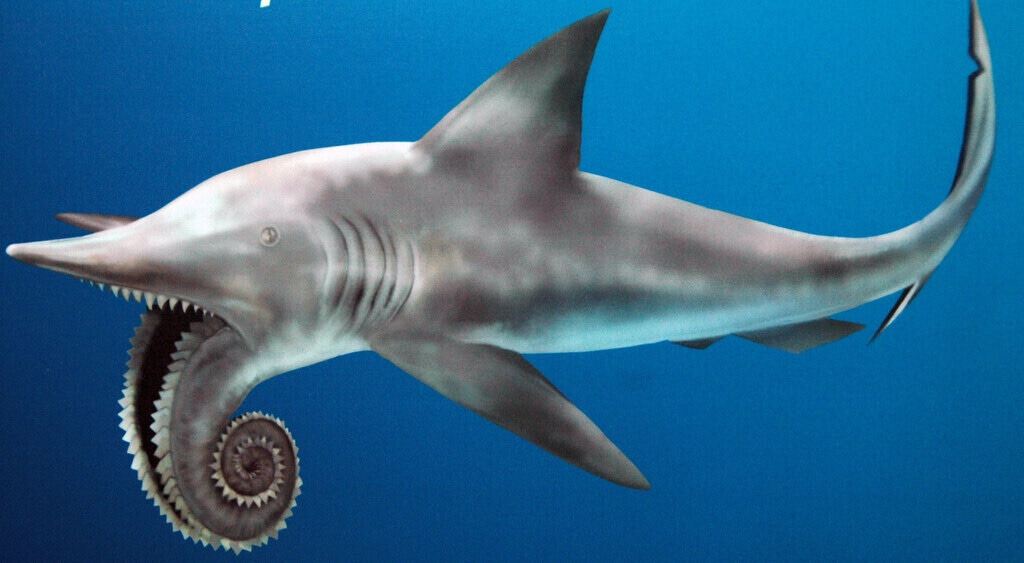
Helicoprion
- Historic Period: Permian
The strange-looking Helicoprion is a pre-historic shark species that lived during the Permian period. This occurred from the Artinskian stage in the Cisuralian to the Roadian stage of the Guadalupian. Basically, they lived from early to late Permian. Of course, as one can imagine, when Helicoprion fossils were discovered, anthropologists and even marine biologists were amazed by it.
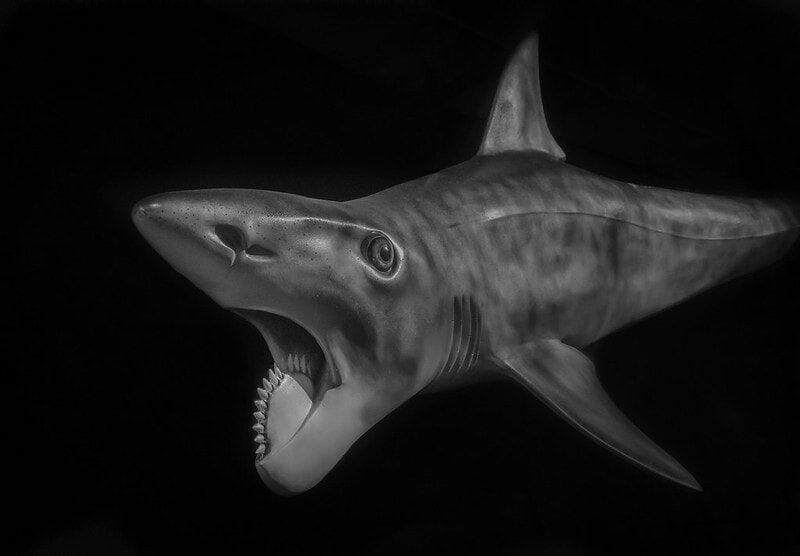
The Helioprion has one of the craziest sets of teeth known among any animal species. They are spiral, and scientists did not realize originally how they even fit. This was debated for several years, but we now know they extended out a bit. Due to their major size and impressive teeth, as well as their speed, they were major threats. It is thus, fitting we’ve listed them as one of the most threatening prehistoric predators known to man.
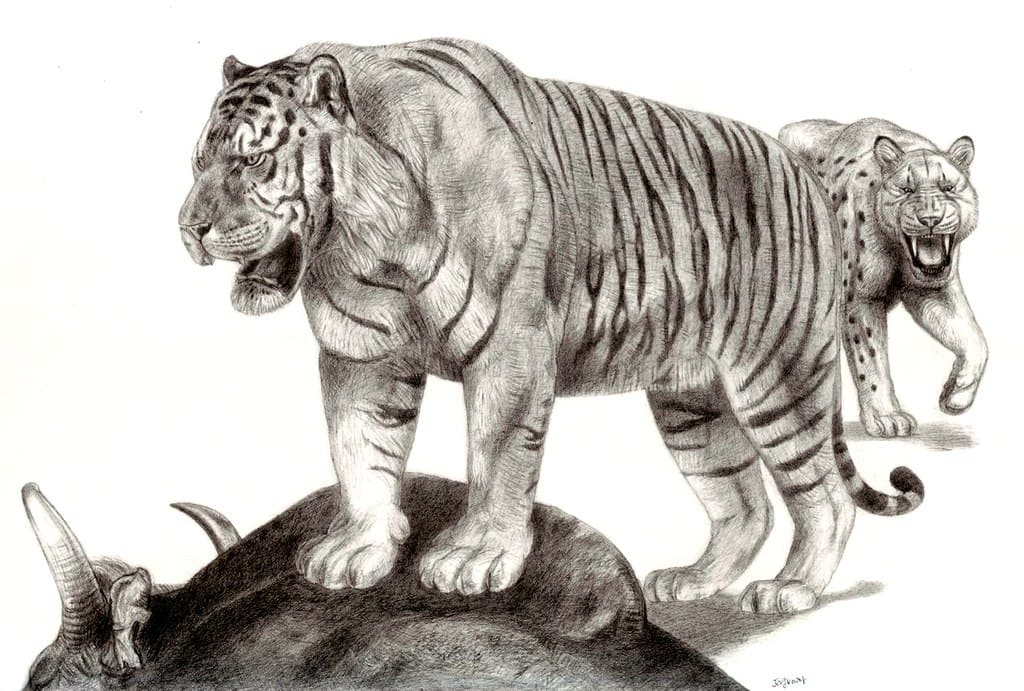
The Ngandong Tiger
- Historic Period: Pleistocene Epoch
The Ngandong Tiger is one of the most amazing big cats in history. The species gets its name from the location fossils were first found of the tiger, that being the Ngandog village. It was an early ancestor to all modern tigers, and one of the true earliest connected to the Panthera line of big cats. While something could always come along and be larger, as of now, the Ngandong Tiger is not just the largest Tiger to ever exist, but it is also the largest cat of any type to exist.
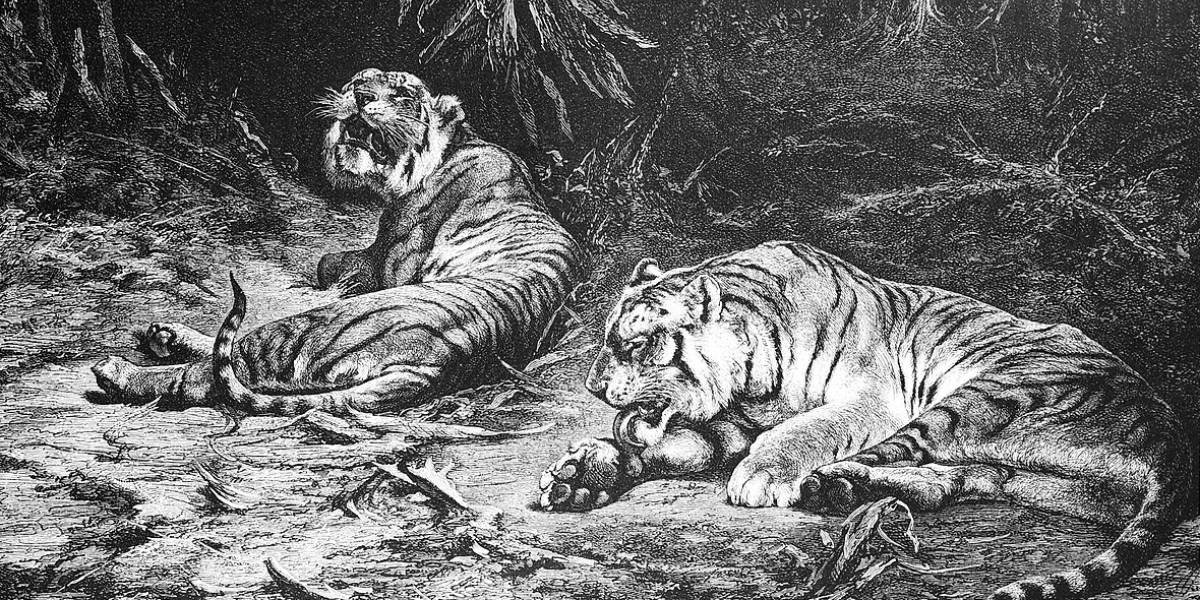
Original estimates had this tiger being no bigger than a modern Bengal Tiger. Yet further analysis, as well as other fossil discoveries, has killed that concept off completely. The Ngandong Tiger is said to have weighed roughly 1,040 pounds, putting it at a larger size than the large lion species from history as well as those assumed to be connected to big cats. They would have been a major problem in their time, making them one of the most threatening prehistoric predators known.
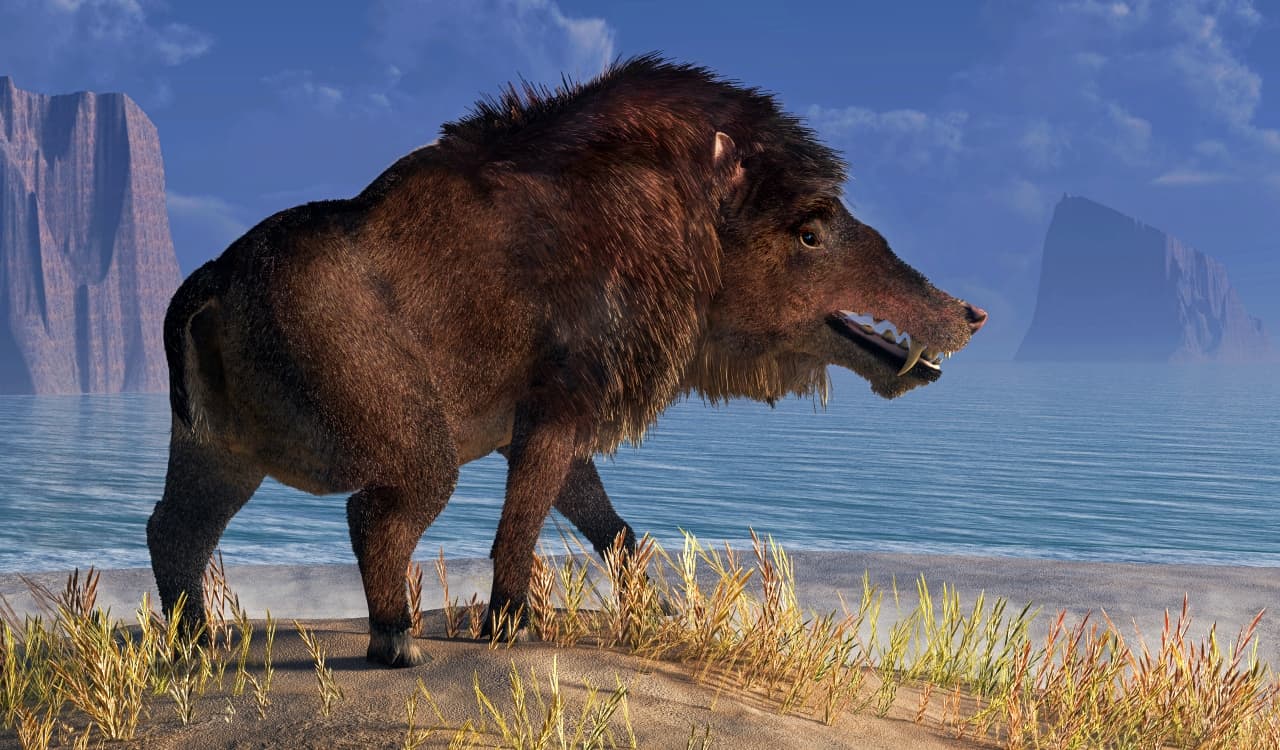
Andrewsarchus
- Historic Period: Middle Eocene
The Andrewsarchus was quite a unique species, which is truly hard to pin down. We know it is a mammal species that lived during the Middle of the Eocene period, roughly 48 to 41 million years ago. It looked a bit like a large rat, mixed with the body of a warthog without the tusks. They were only found on land as well and would have more than likely hunted smaller game of their time. In spite of not being the largest species on our list, this was by no means a small animal.

In fact, it is the largest carnivorous mammal species to ever exist. Its skull alone was near 33 inches in basal length, with its snout accounting for 60% of this measurement. Inside the mouth, they had three incisors, one canine, four premolars, and three molars on each side of their jaws. The teeth were arranged in a semicircular form. They also very well hunted in packs. Since they were the size of entelodonts, they would have been among the most threatening prehistoric predators, especially in packs.
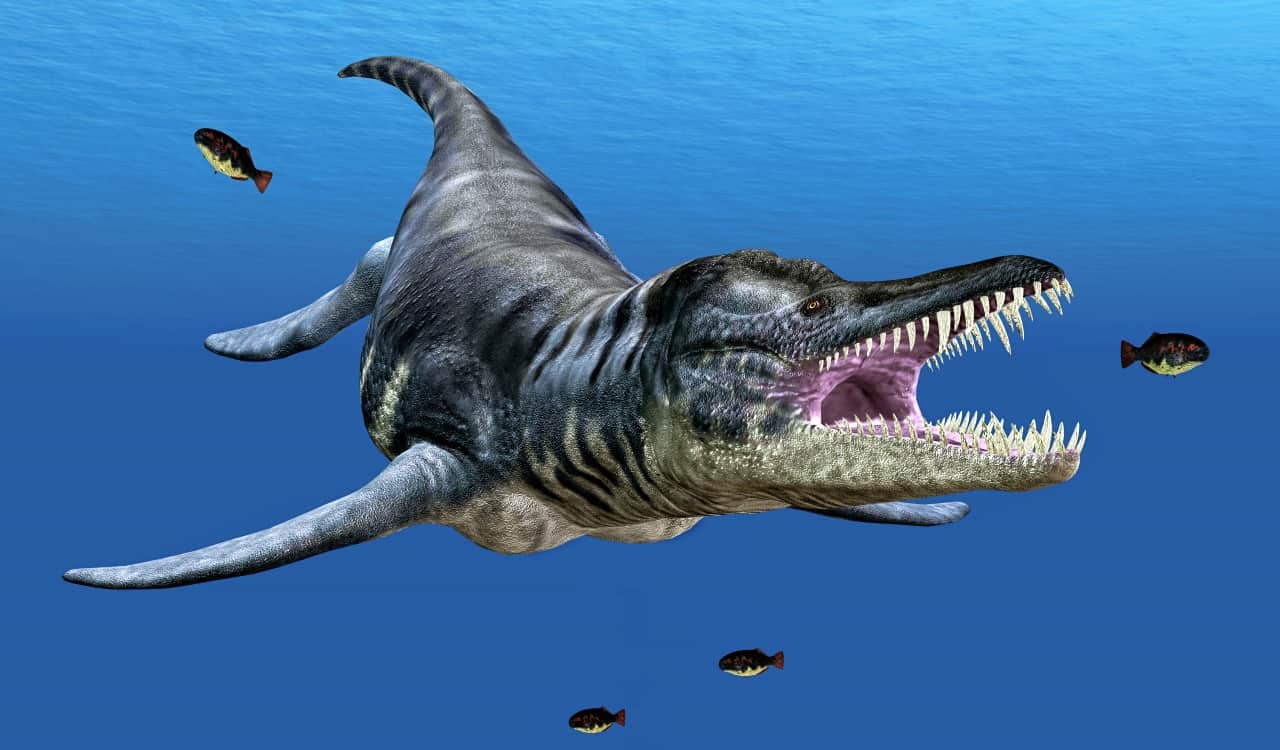
Liopleurodon
- Historic Period: Mid-to-Late Jurrasic
The Liopleurodon species lived up until around several million years ago. Funny enough, this creature was not technically a natural sea-dwelling species. The Liopleurodon was a giant marine reptile and could be compared to something like a crocodile, where it could be in both the water and on land. In the water, they were extreme threats and could take down just about anything. Liopleurodon averages out to be around 30 feet in length but some fossils indicate many were larger.
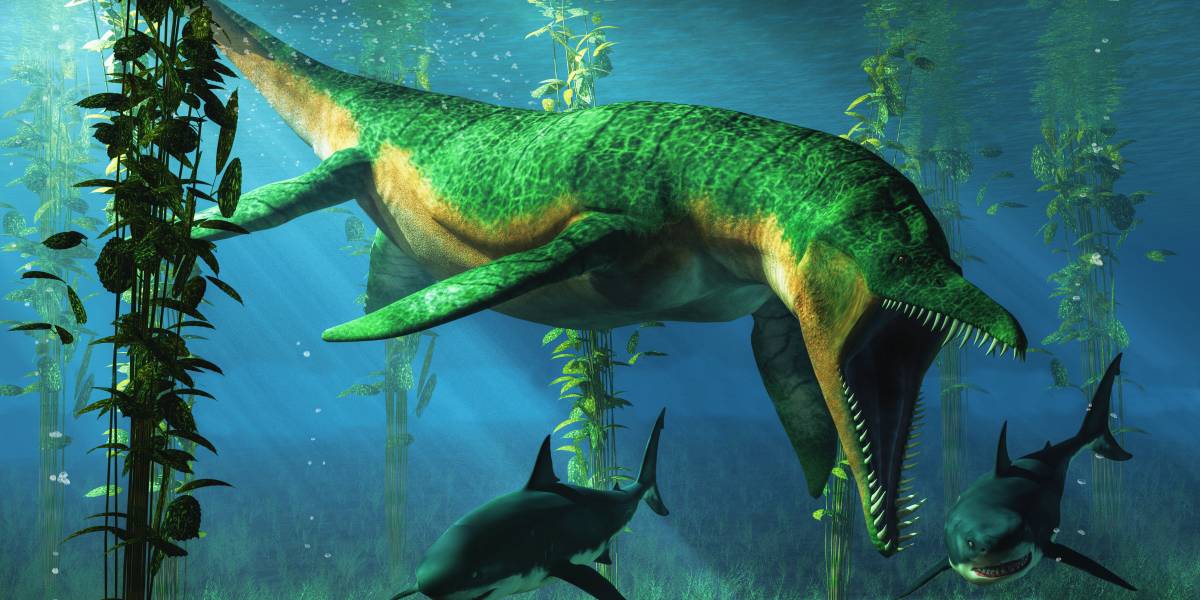
In studies of the species, scientists found that the species had incredibly big and sharp teeth that could rip through anything they chose to attack. They were very fast for their size and even had a great sense of smell that they used to find prey. This can be judged by studies of their skull. Overall, they would have been some of the most feared creatures of their time. Thus, we feel they deserve to be ranked among the most threatening prehistoric predators.
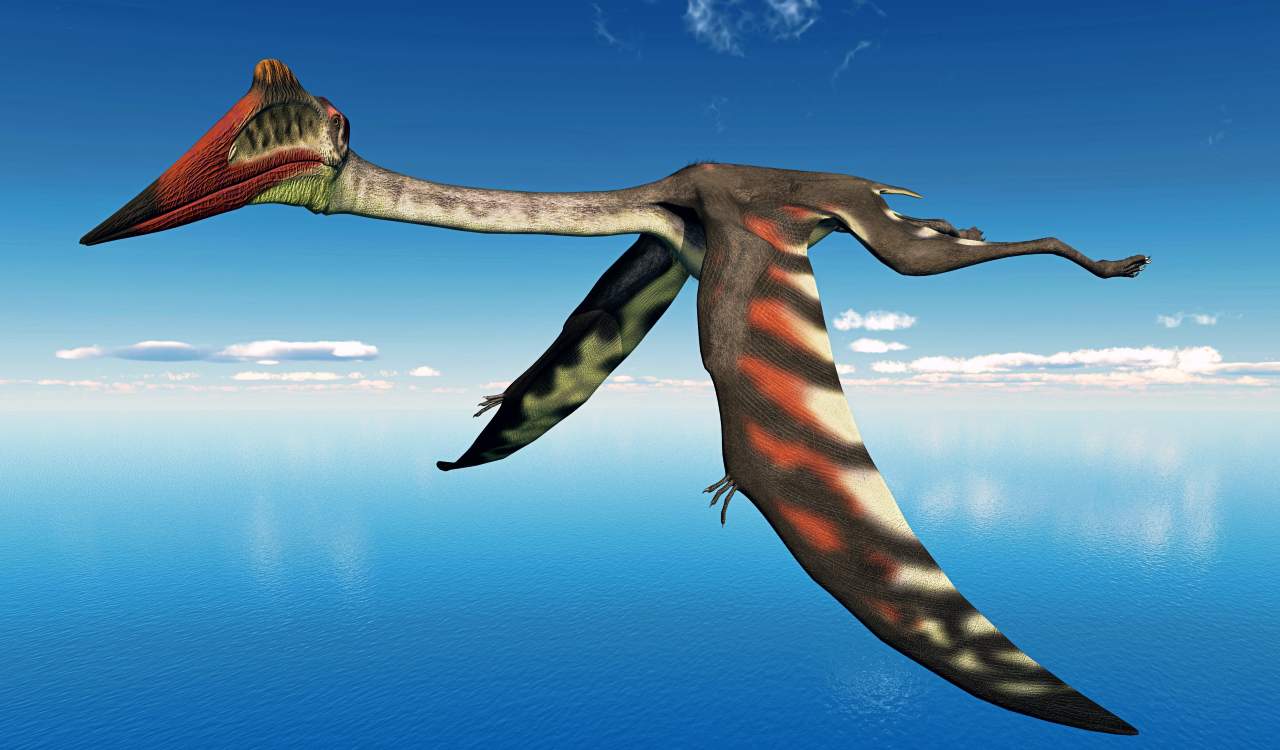
Quetzalcoatlus
- Historic Period: Late Cretaceous
The Quetzalcoatlus was a tremendous flying predator that could be related heavily to the pterosaur. They lived around the same time, but are unlikely to have always shared similar airspace. The Quetzalcoatlus was originally discovered in Texas by Douglas A. Lawson in 1971. A Geology Grad student at the University of Texas at Austin, Lawson’s discovery was not intentional but turned out to be a huge deal.
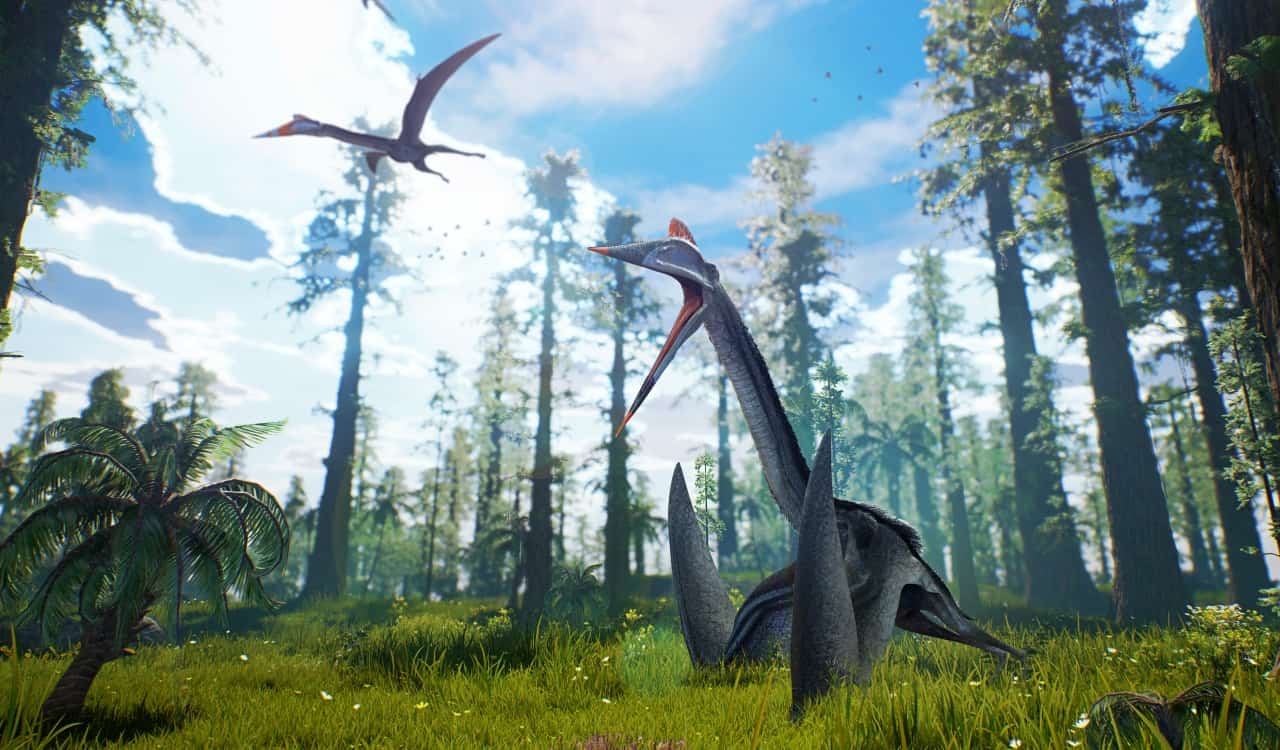
This discovery turned out to be major to science, as Lawson found what would come to be known as the largest flying creature of any kind to ever live. It was traced back to the Cretaceous period, putting it in some major company. While the wings were naturally large, the species also had an incredibly large, pointed beak. It could likely pierce through some animals. The talons it had were also massive and sharp. All of this makes it one of the most threatening prehistoric predators in our book.
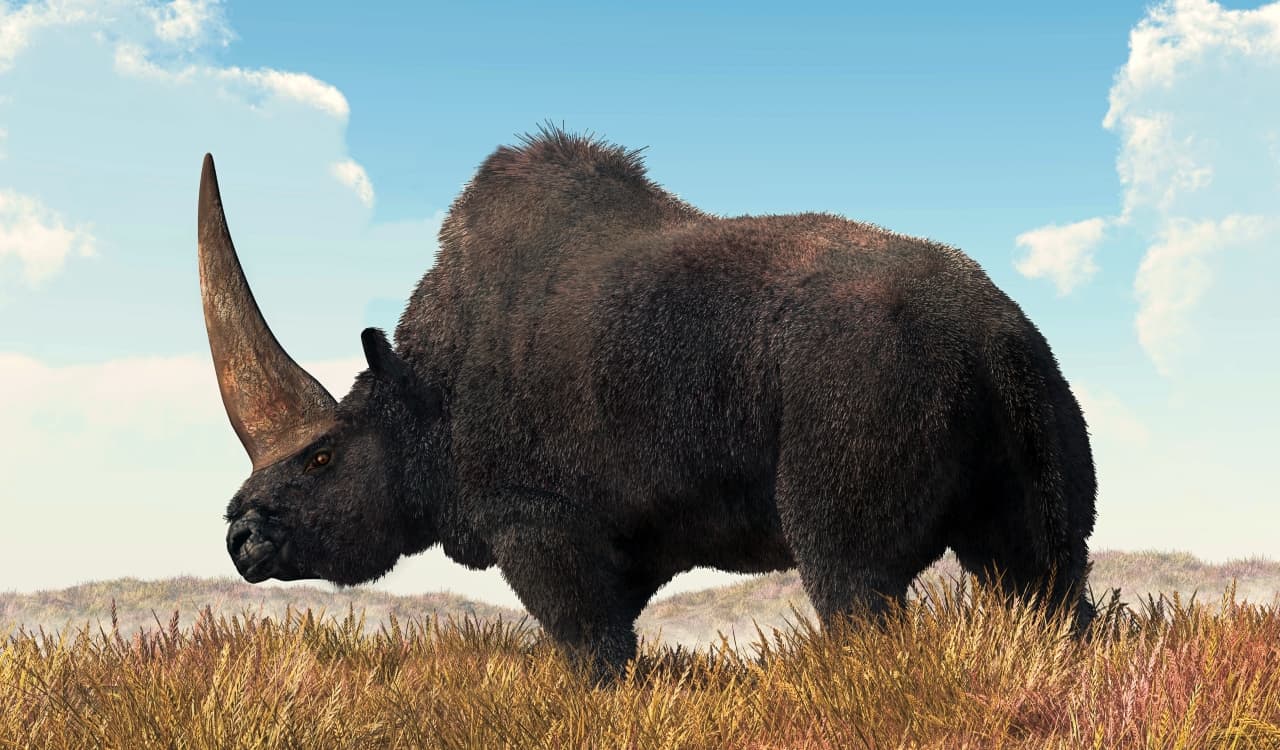
Elasmotherium
- Historic Period: Late Miocene to Late Pleistocene
While the Triceratops might not be connected to the modern Rhinoceros, the Elasmotherium certainly was connected. In fact, this is an ancient group of Rhinos that lived in the Eurasian territory during the Late Miocene period all the way up and through the Pleistocene period. This means they existed for hundreds of thousands of years and did not go extinct until nearly 40,000 years ago.
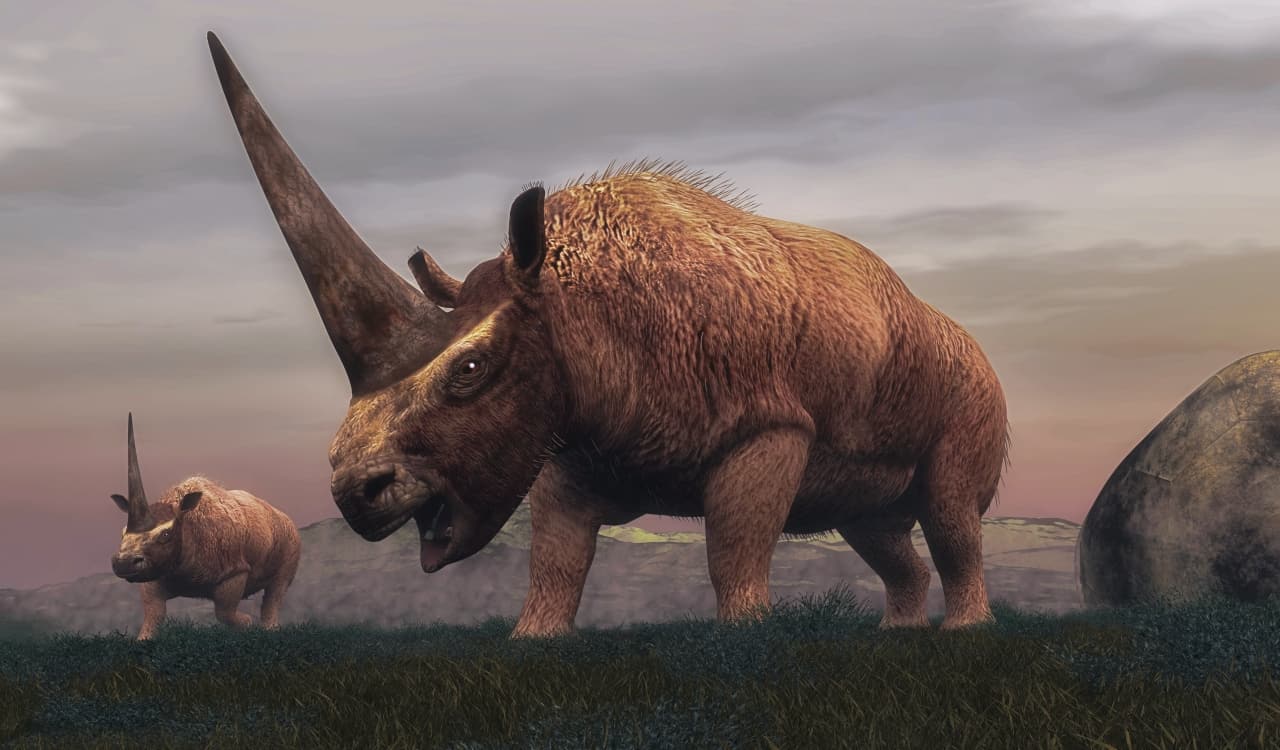
Although some estimate it was under 30,000 years, this is not reliable. They looked a lot like modern rhinos but far larger. The biggest known species was the Siberian Unicorn, which happened to be the size of a Mammoth. It too is said to have had a large horn on its head. It also had longer legs than modern rhinos, giving it the ability to move like a horse. Although this species was a herbivore, it was still a major threat. Thus putting it on the most threatening prehistoric predators list.
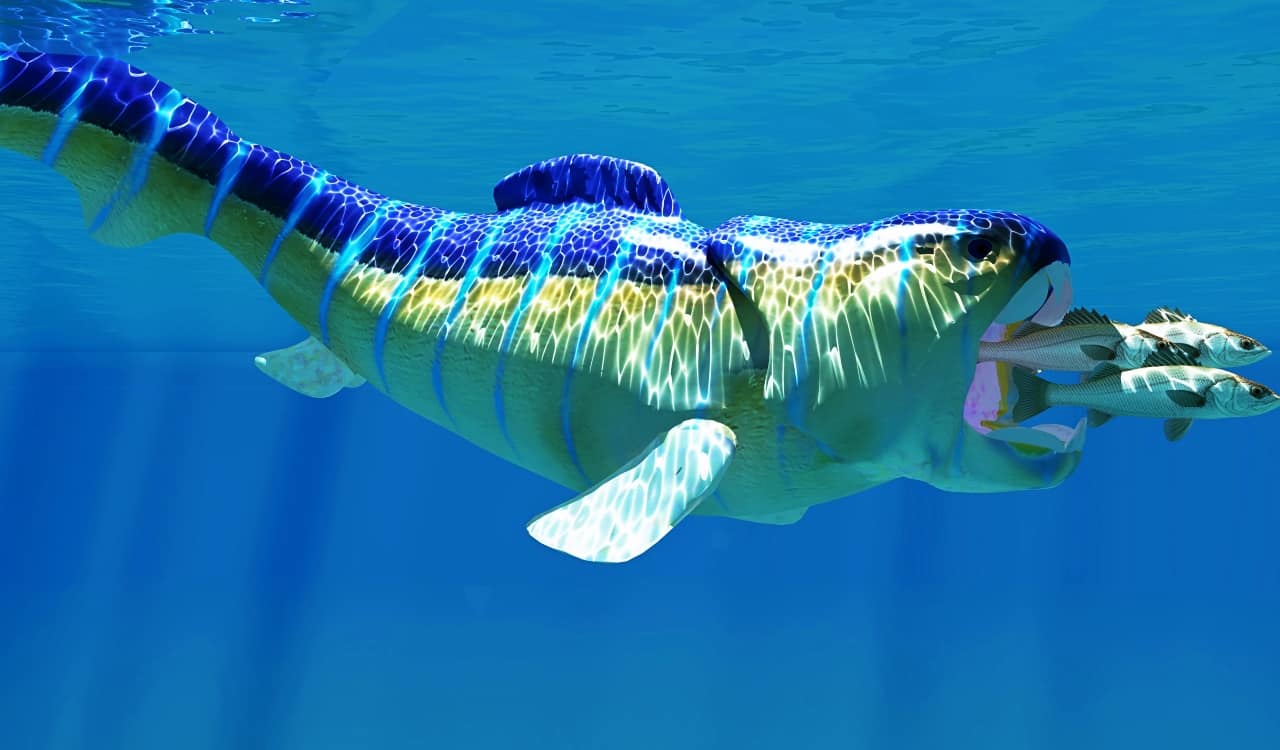
Dunkleosteus
- Historic Period: Late Devonian
The Dunkleosteus was quite unique and among the top apex predators of its time period. This species was found in the water and routinely preyed on sharks and even other top predators. The Dunkleosteus had an armor-like plating, making them impossible for other predators to truly battle against. They had one of the single strongest bites ever recorded. Measurements found they were able to bite with a pressure of 8,000 pounds per square inch.
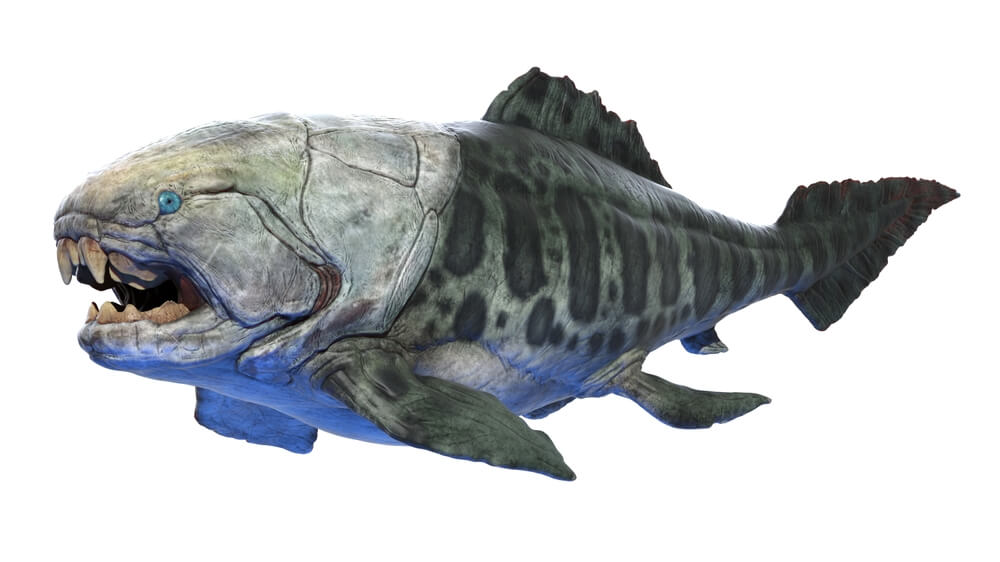
This is on par with the Tyrannosaurus Rex! That is only measuring from the tip of its fang too. The species averaged 33 feet in length, and they were said to be relatively quick based on their frame. All of this made them a creature to fear for any species that decided to go into the water. They were as powerful as a whale, as skilled and speedy as a shark, and as ruthless as a modern crocodile. It’s clear that they should be among the most threatening prehistoric predators.
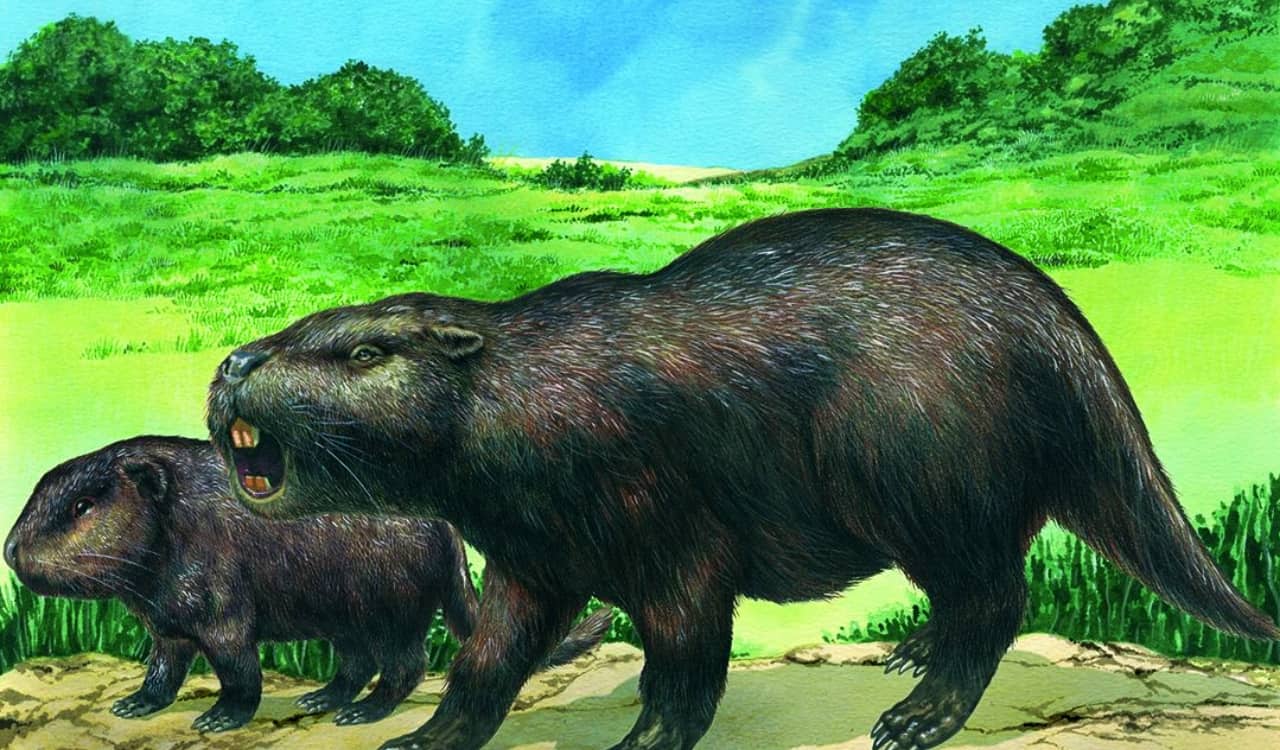
Josephoartigasia monesi
- Historic Period: Pliocene to Early Pleistocene
At first glance, images of these creatures would never tell the full story. While they looked a lot like the modern-day Capybara, and are likely even related to them, they were much larger. This is the largest rodent species to ever exist. The Josephoartigasia monesi had skulls up to 21 inches long, a body length of up to 10 feet, and a height of around five feet. This also came with incisors more than 12 inches in length!
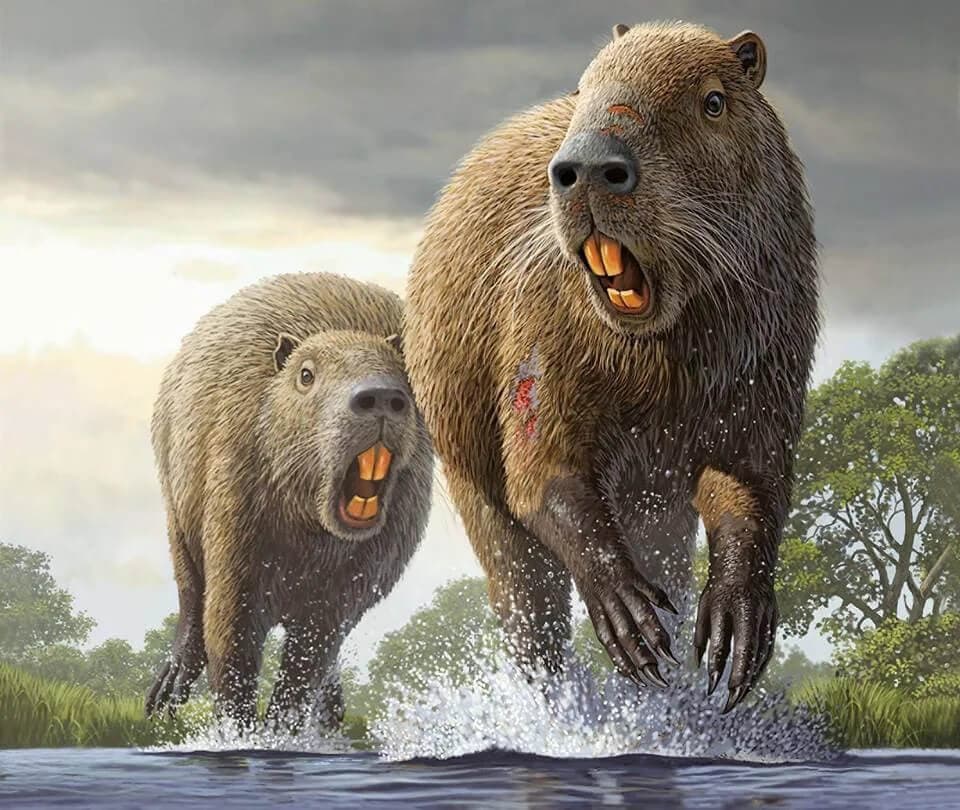
If that was not enough to make you think twice about not fearing this species, its weight surely would make you think twice. It is said that the weight was debated for years. Initially, they found the average weight was between 880 to 1,540 lbs. Yet when comparing them with other extinct rodents, they found this species could have been up to 5,701 lbs! The median of this is said to be roughly 2,670 lbs. That would certainly put them among the most threatening prehistoric predators.
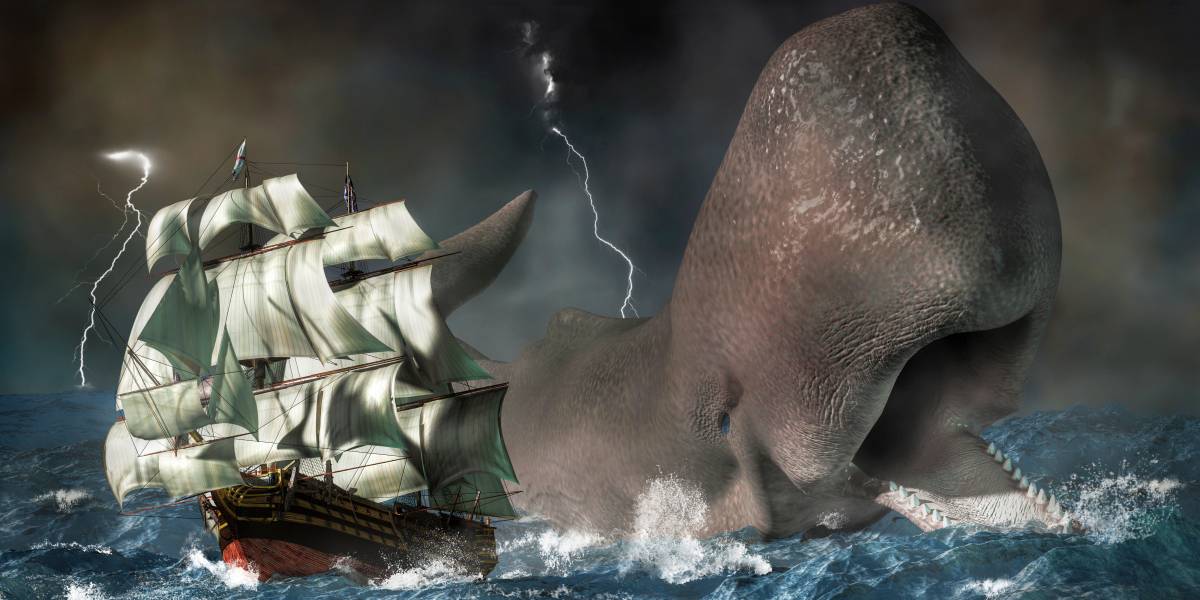
Livyatan
- Historic Period: Miocene Epoch (Tortonian Stage)
While it was assumed for years, we’re now pretty much sold on the idea that the Livyatan was the inspiration for the story of the whale from the Moby Dick novel. It is also widely assumed to be the inspiration for the Leviathan creature. As you can guess, this is an extinct whale species. Specifically, it was a highly predatory sperm whale species. They preyed pretty much on anything in the water, yet mostly went after other whales as well as seals and much more.
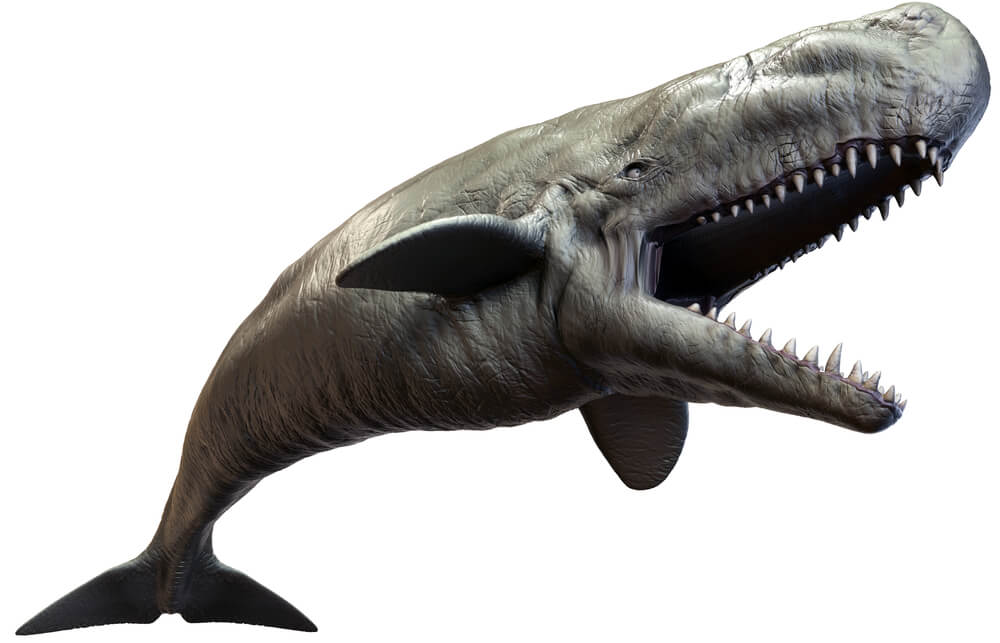
They lived in the Miocene Epoch, going extinct just under 10 million years ago. It likely went extinct for a few reasons. One being the colder climate it faced at the end of the Miocene as well as competition for food. They were the size of your modern sperm whale, with larger mouths and teeth. Therefore, they were far too large to go without food for long. Regardless of why they went extinct, the Livyatan is certainly among the most threatening prehistoric predators in history for sure.
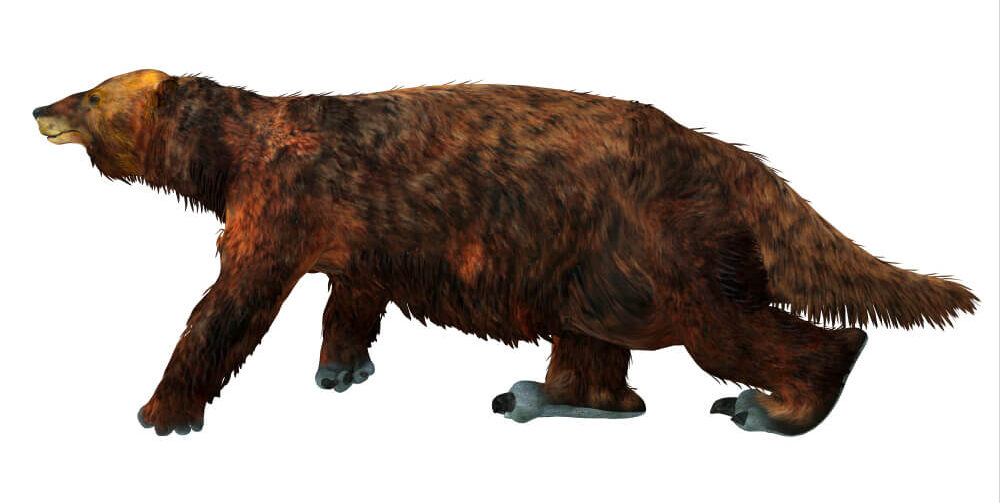
Megatherium
- Historic Period: Early Pliocene to End of Pleistocene
The Megatherium, like many others on this list, is known for being a bit unique. They are pretty much a prehistoric version of what we know today as a sloth. Of course, they differ heavily from them but this is the closest living relative. They were what we call “ground sloths” in science, and the biggest of the species was about the size of a full-grown elephant. While not all reach this size, it’s not like smaller ones are that far off. They can be quite large as well.
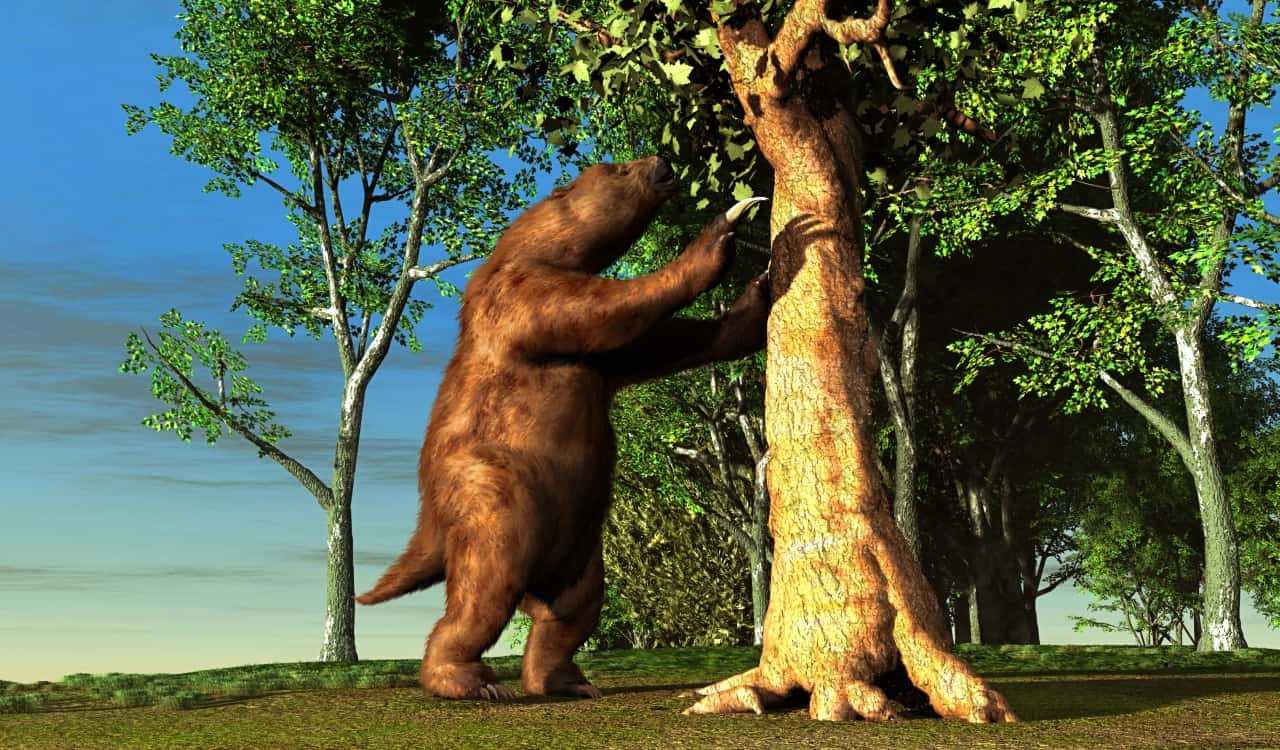
This species only went extinct around 12,000 years ago, which is barely anything compared to some on this list. Their decline is directly caused by two things, new human settlements and the Quaternary Extinction Event. This means early Homo sapiens and possibly Homo Erectus came across the Megatherium. They were quite dangerous due to their size and muscular build. If they did come across humans, the humans would have a tough time with them for sure.
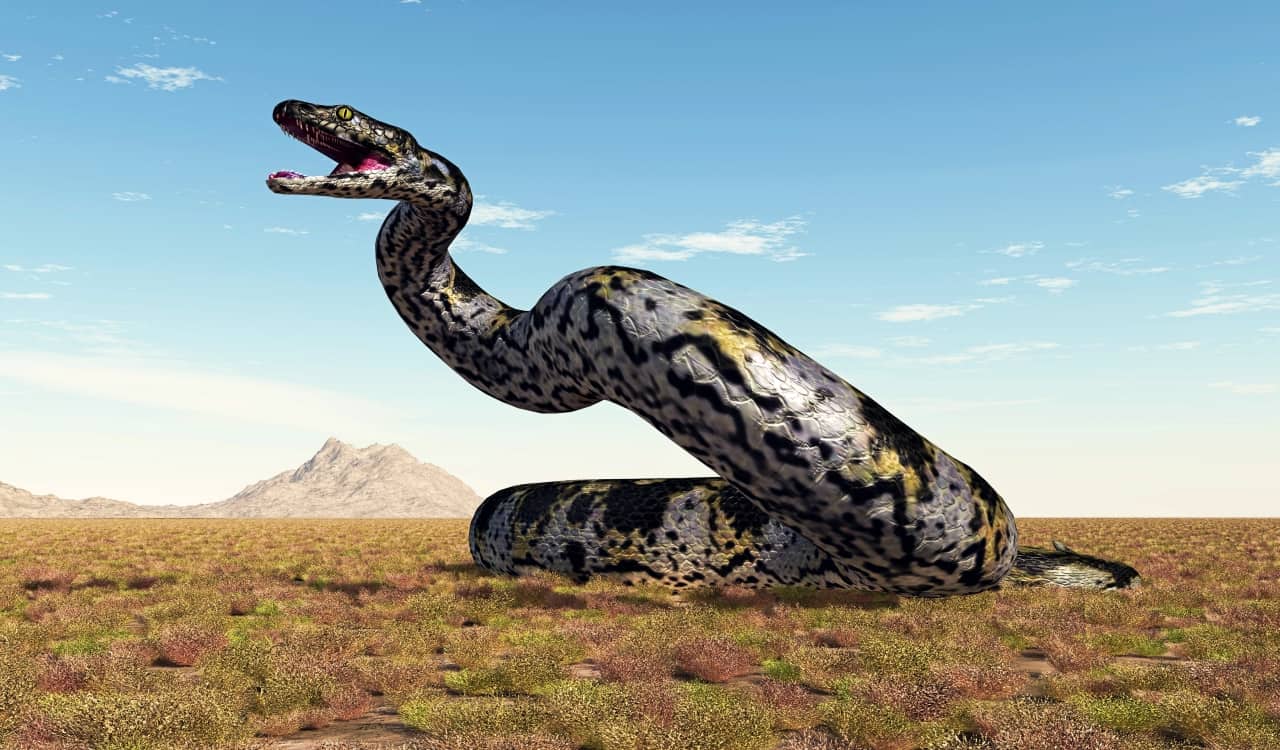
Titanoboa
- Historic Period: Middle to Late Paleocene Epoch
If you’re not a fan of snakes, look away now, because this is the largest snake ever to have lived. If you thought today’s anaconda was huge, they’d look like babies next to the Titanoboa. It is said they lived roughly 50 to 60 million years ago, meaning they would not have come across the most recent versions of humans. It is a good thing too because humans would have never stood a chance against the Titanoboa.
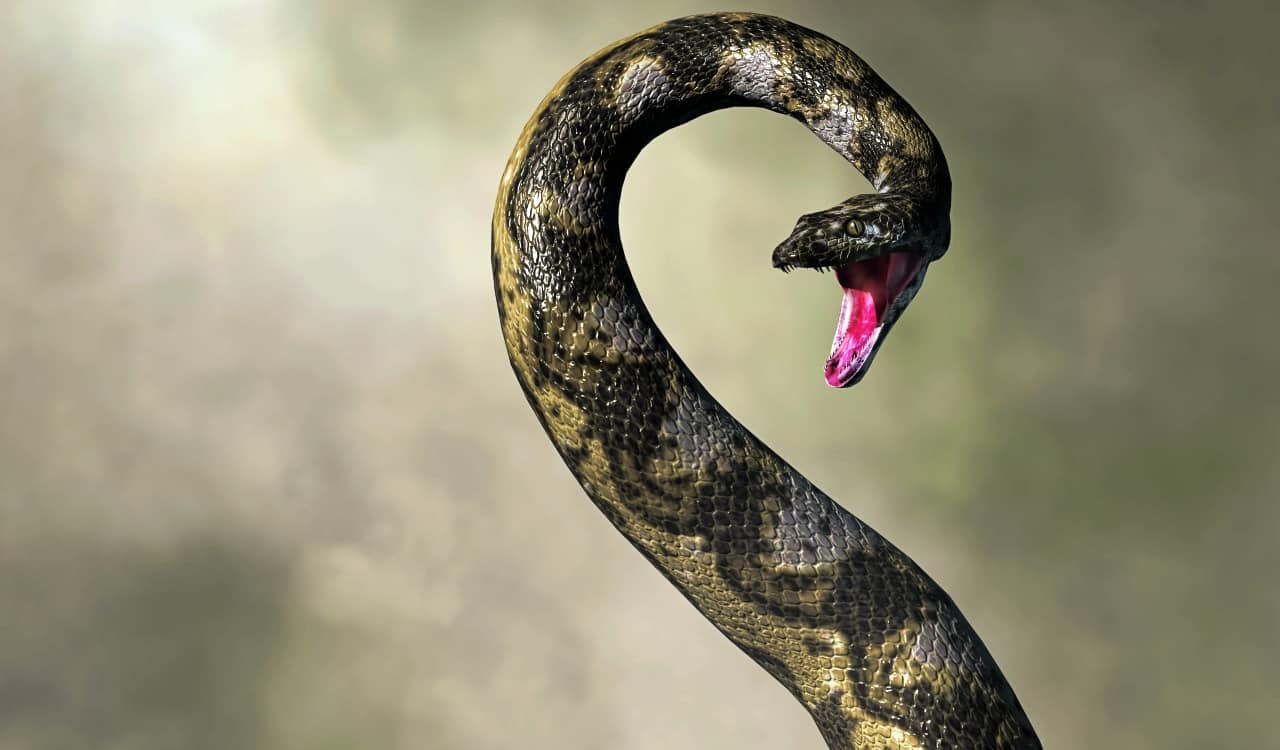
They measured out to roughly 42 feet in length and could weigh around 2,500 lbs. This means they literally weighed over a ton, and some very well could have weighed more. Scientists believe, based on all known creatures during their time, the Titanoboa would have been a major apex predator. This is enough to land on this list of the most threatening prehistoric predators alone, yet they also found its mouth could pretty much swallow an entire human in one go, with teeth the length of a human head.
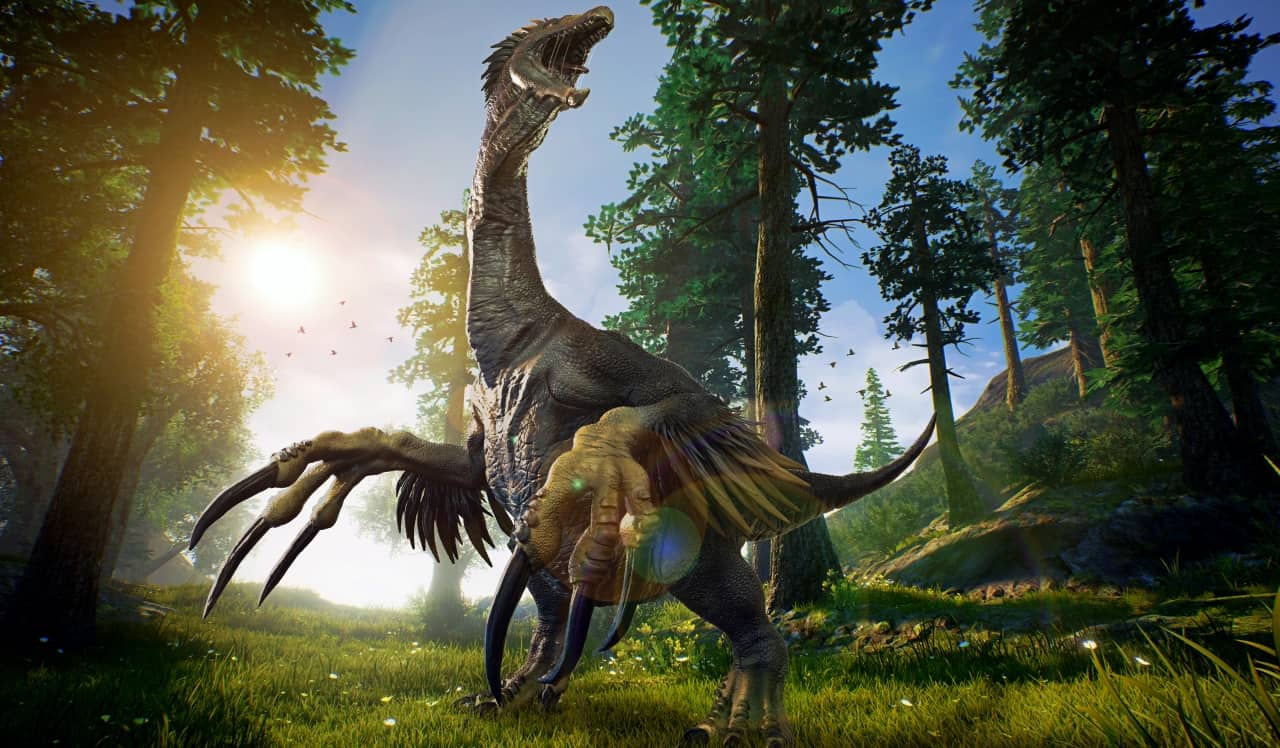
Therizinosaurus
- Historic Period: Late Cretaceous
If you’re searching for a creature that looked the most like what the movies claim dinosaurs looked like, look no further than the Therizinosaurus. This was a reptile and very lizard-like, except it differs from modern lizards in a few major ways. Even compared to the larger monitor lizards, Therizinosaurus was gigantic. They’d grow to somewhere within 30 to 33 feet long and weigh over 6,600 lbs. Literally, they weighed over three tons, which is simply massive.
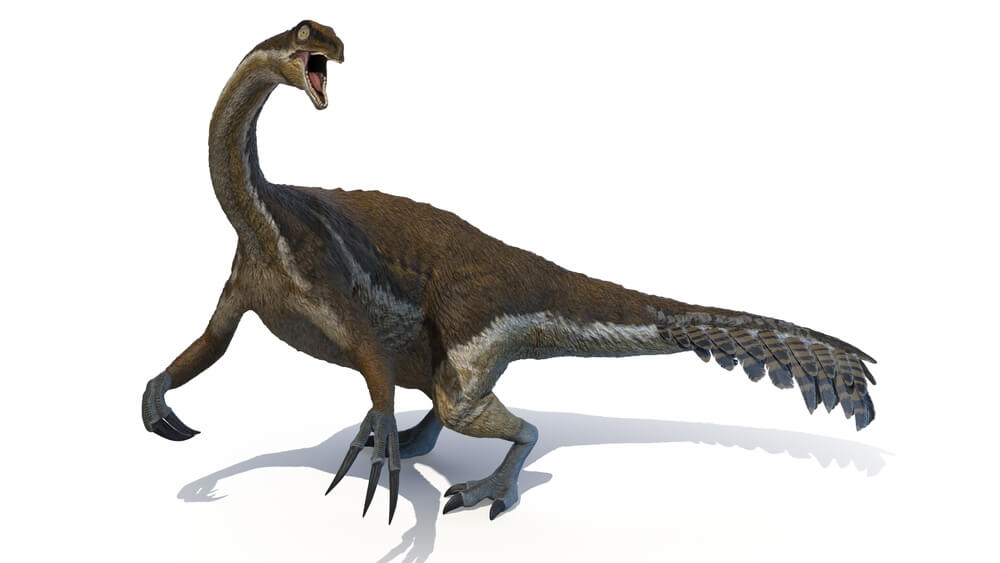
This species also has the longest claws on record of any animal, around 20 inches long! The claws were stiff and elongated, which came in handy. They were pretty slow and widely assumed to be herbivores with a horny beak and wide torso. Its body certainly helped it as a herbivore as its height heavily benefitted them when it came to pulling down vegetation obviously. In spite of mostly liking plants, they are clearly among the most threatening prehistoric predators due to their potential.
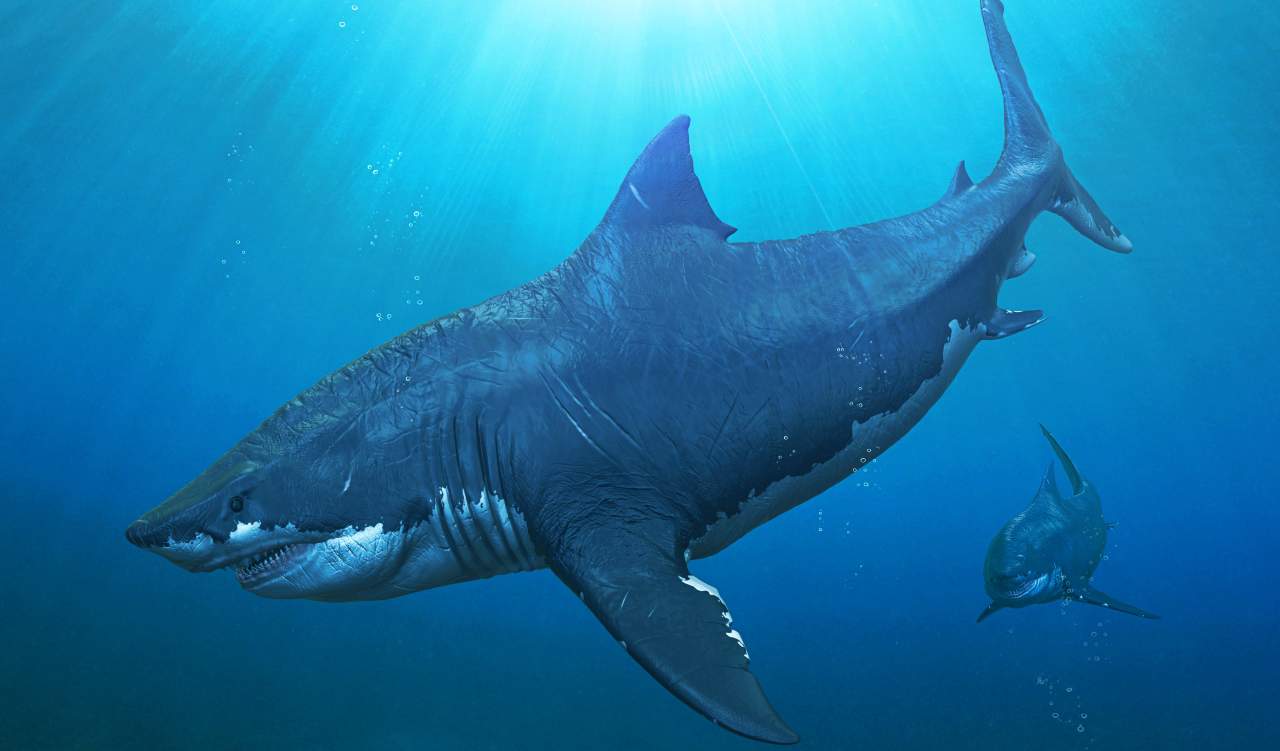
Megalodon
- Historic Period: Early Miocene to Pliocene
If you’re looking for a nightmare sea creature of any kind, the Megalodon would be the most prominent. This is the largest shark species ever known to man. While scientists all differ on its closest living shark relative, many believe it is related most to the whale shark, basking shark, or sand tiger shark. Yet it is much larger than any of the three. Megalodon reached between 47 and 52 feet in length, but some averaged out to around 34 feet. This might depend on the specific fossils you study.
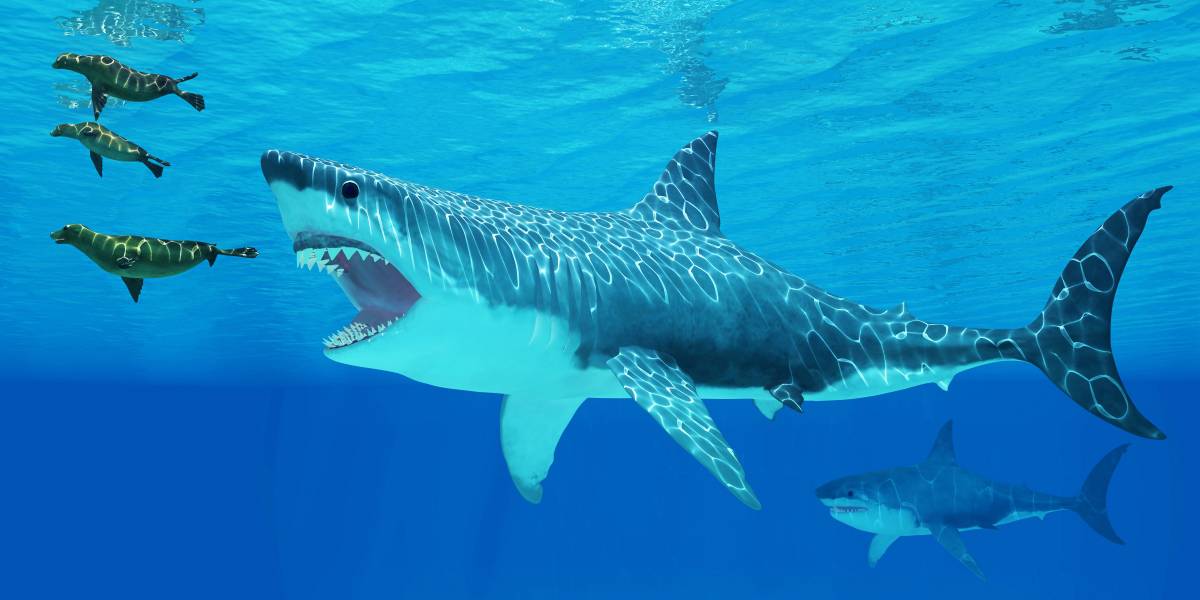
They had notably large teeth with amazing force. Their bite force reached between 25,000 to 41,000lbs, among the most known for any creature. Their impressively large jaws certainly assisted heavily with this, but the Meg’s teeth were heavily threatening too. They were thick and robust, making them specifically built for breaking through bones. They could take down today’s full-grown whales, so it’s clear they are among the most threatening prehistoric predators, for sure.
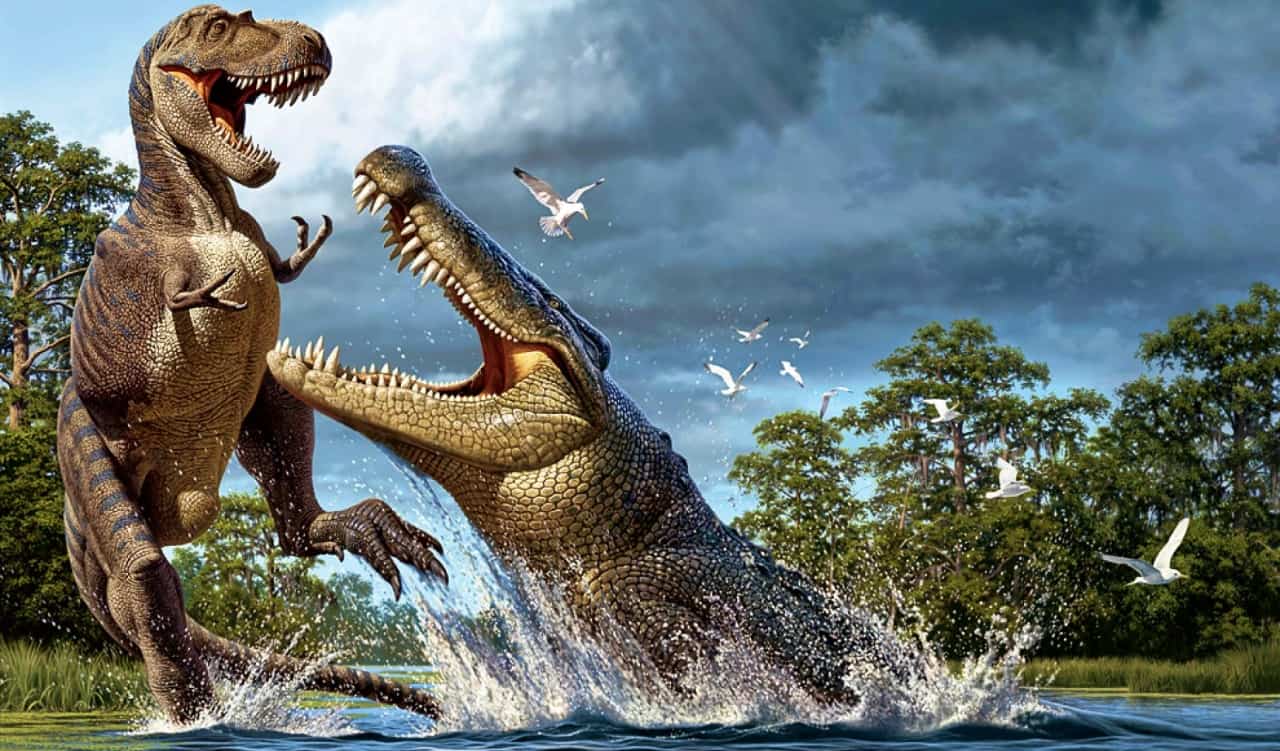
Deinosuchus
- Historic Period: Late Cretaceous
The Deinosuchus is closely related to the modern crocodile and is essentially just a prehistoric version of one. Of course, that obviously means they were a lot larger, as Crocs do date back to the prehistoric era. Nothing really changed in them after they perfected the design, except for size differences. The Deinosuchus last lived between 82 to 73 million years ago. During their time, they measured up to around 39 feet in total length, dwarfing later Crocs.

Their teeth were meant for destroying and had one of the strongest bite forces of any creature during its era. The bite force would have been around 23,000 PSI, which is roughly around 23,000 lbs. They likely fed on mostly water-based creatures like fish and large sea turtles. However, the Deinosuchus was fully capable of taking down and eating the most dinosaurs that they would have come across. In fact, it is widely assumed that they would have at some point.
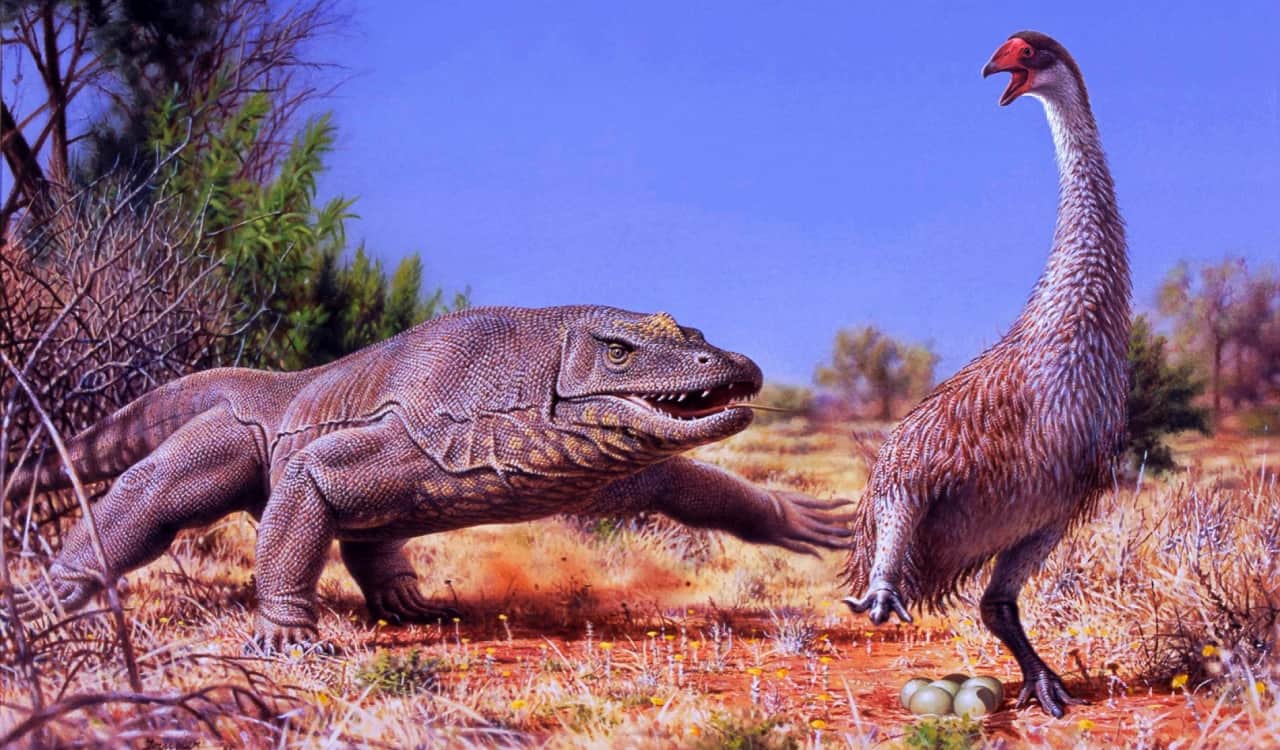
Megalania
- Historic Period: Pleistocene
The Megalania was a prehistoric monitor lizard and said to be the first major creature to have settled in Australia. The youngest fossils we have on record date back to only 50,000 years ago. Due to the widespread native population that has been in Australia for thousands of years, it is possible early humans came across these massive creatures. In fact, they are the ancestor of the Komodo Dragon. Many feel that they are the creature that truly inspired the Dragon legend as well.
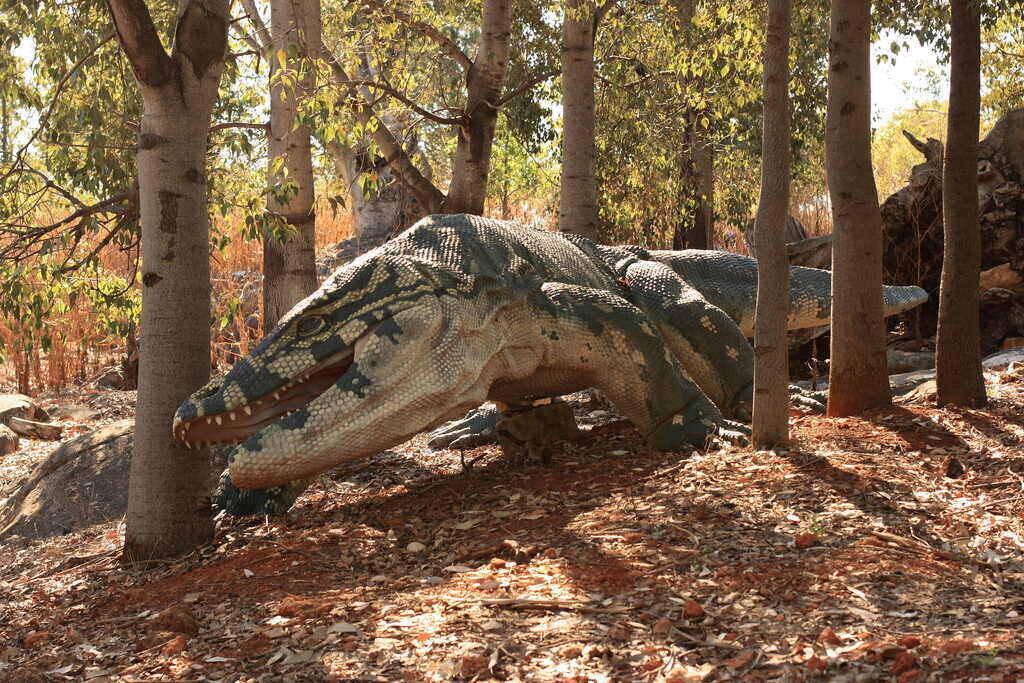
They could not fly but they reached around 23 feet in length and weighed a little over 1,300lbs. They had the same venom in their saliva that Komodo’s have today, and the current version can make your skin burn. A more powerful version could make it feel on fire. Therefore, some early humans could have used them to inspire the Dragon spitting fire myth, as it sort of did do this. They simply did not know what venom was at that time, and tales can miss little details after thousands of years.
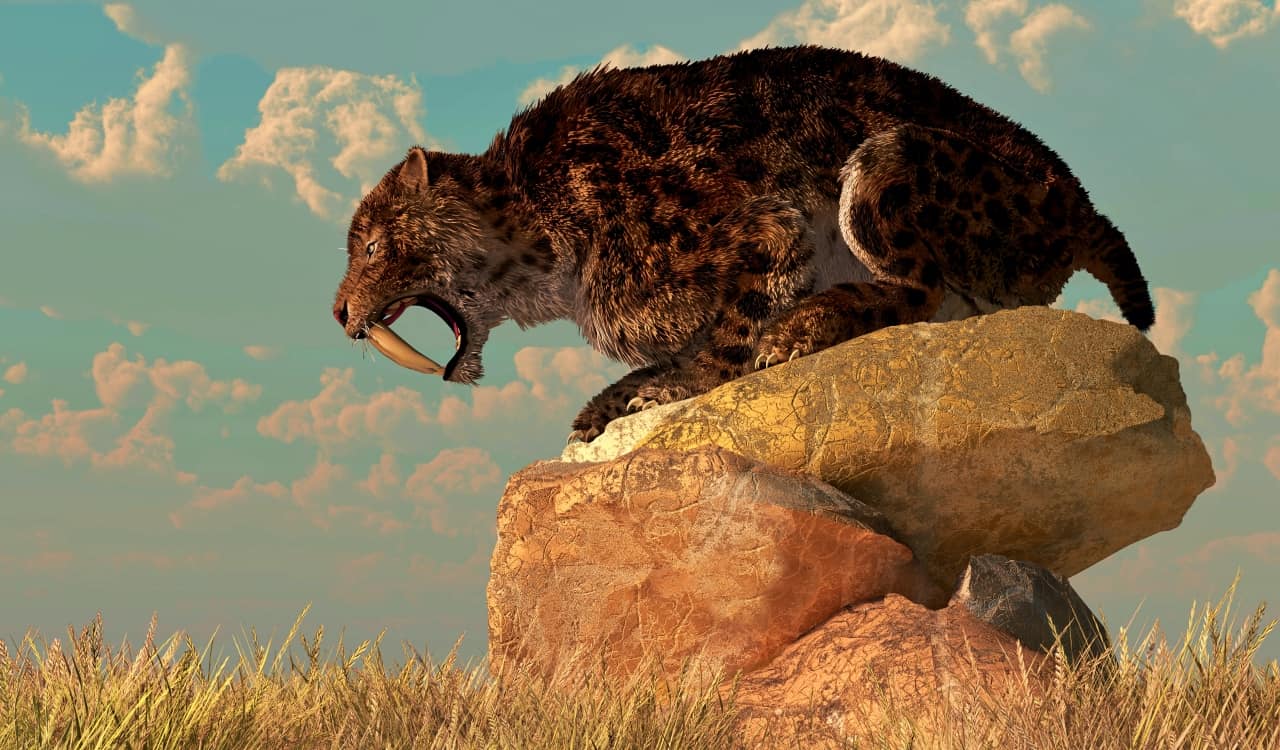
Saber-Toothed Tiger
- Historic Period: Pleistocene
In spite of the names used for the creature (Saber-Toothed Tiger/Saber-Toothed Cat), it was not a tiger nor a cat at all. In fact, the Saber-Toothed Tigers were actually more closely related to modern-day marsupials like the Kangaroo. They come across as cats by how they appeared, yet they would have had pouches too. They were large predatory mammals that hunted in packs or alone and were apex during their era. The species did not go extinct completely until around 10,000 years ago.
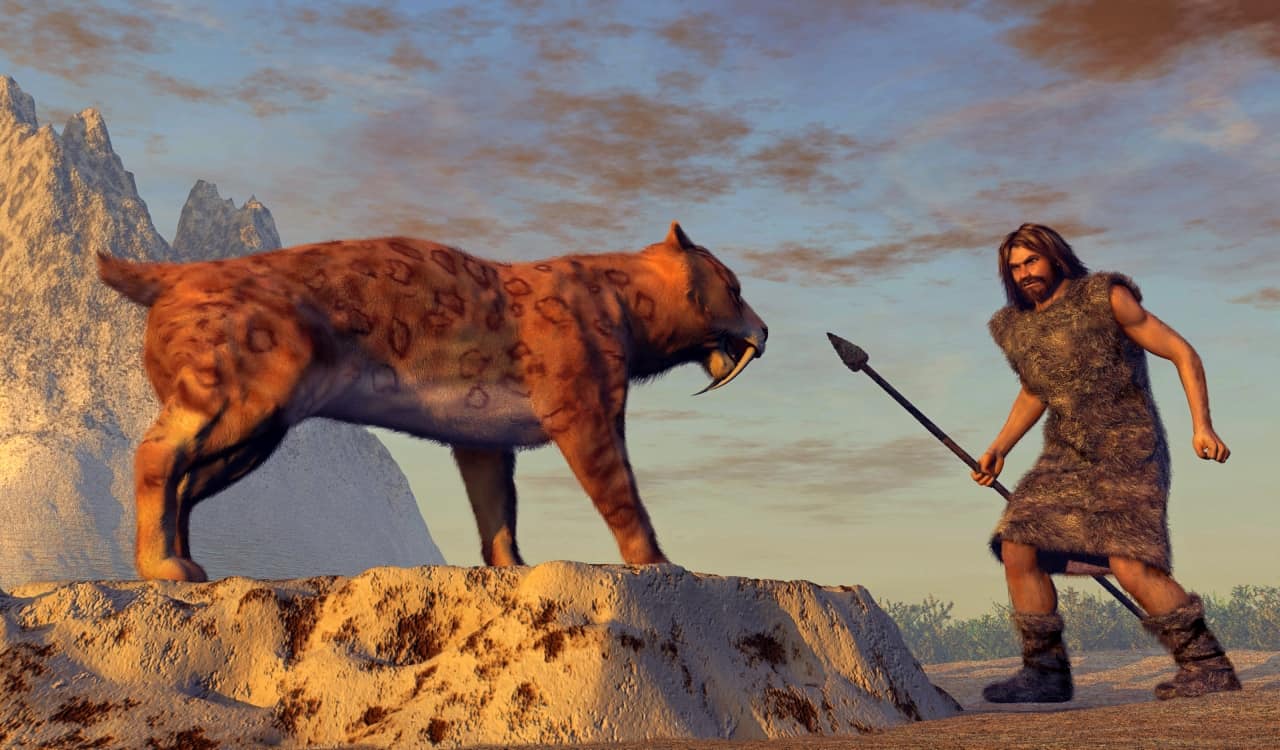
We often connect them to Dinosaurs but it’s unlikely that they lived much alongside them, if at all. More than most, human beings almost certainly came across the species. They were slightly larger than most modern-day predatory big cats like Lions and Tigers, and they also had their infamous dual mandible teeth. Sabers were also bear-like in their build, making them tough to deal with. Clearly, they are among the most threatening prehistoric predators known.
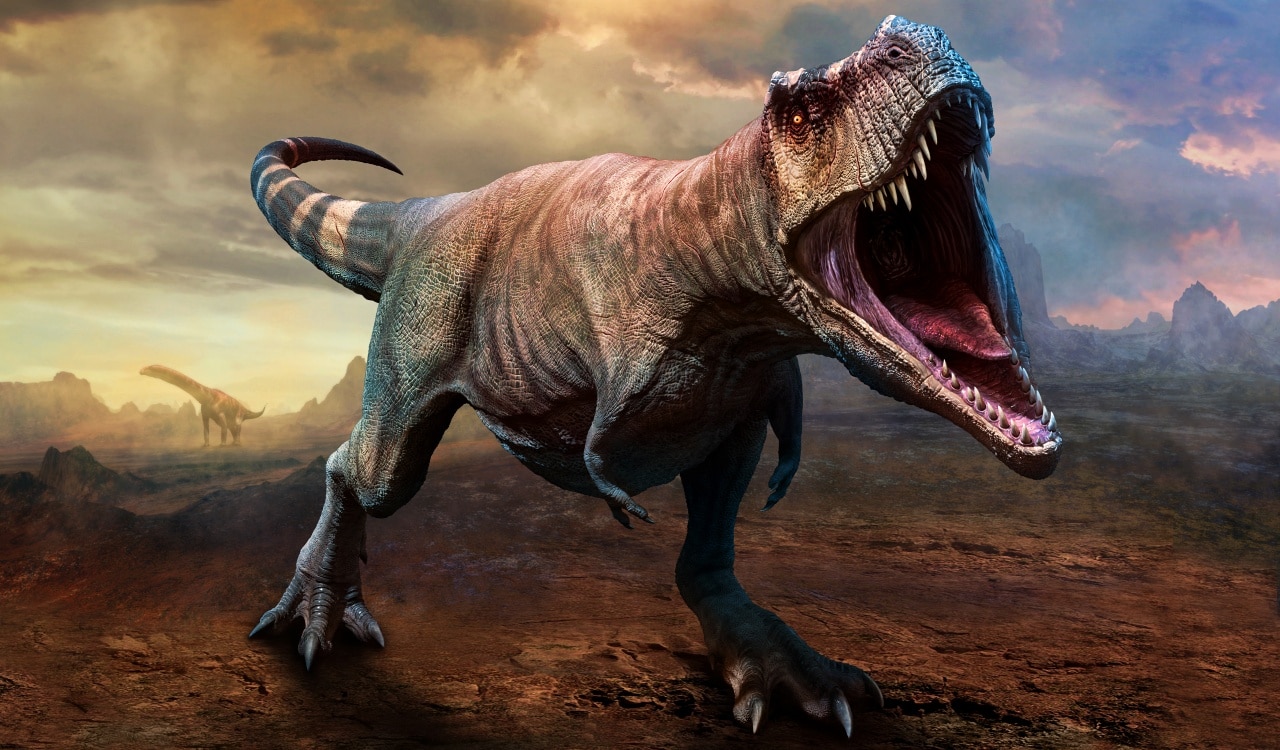
Tyrannosaurus Rex
- Historic Period: Late Cretaceous
We all know that you looked at this list of the most threatening prehistoric predators and just knew the Tyrannosaurus Rex had to be on the list. Of course, we could not let you down there. Sadly, we must burst your bubble and say they did not look quite like the T-Rex you see from Jurassic Park. They also were not around for as long as people think as they came in during the Late Cretaceous period.
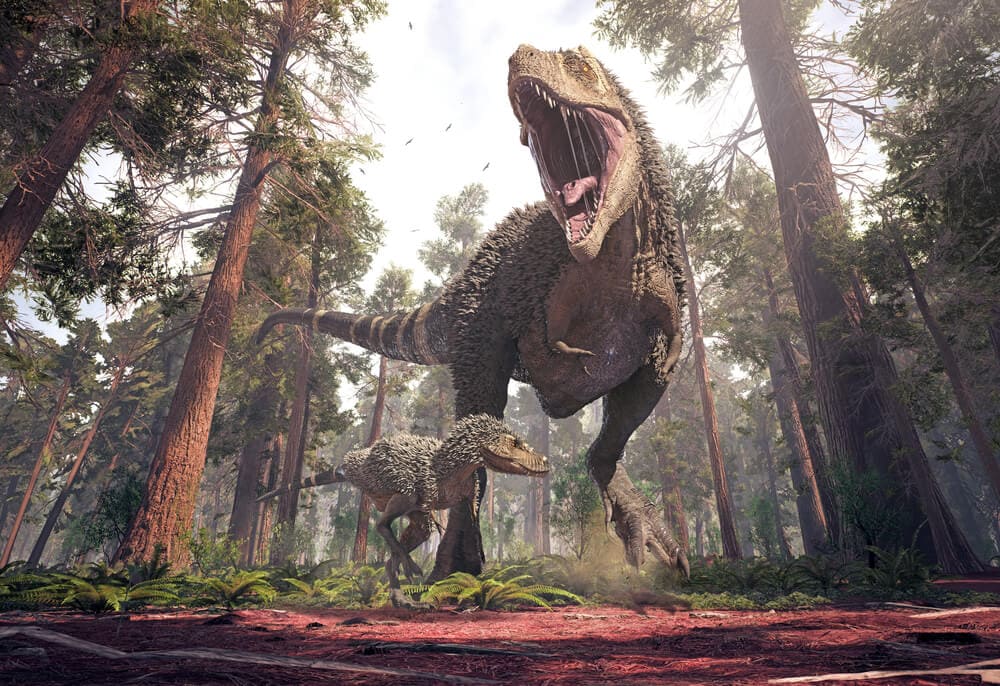
In spite of not technically being a reptile, the T-Rex is also the last of the dinosaurs to be non-avian. However, they still connect to birds, mostly the Ratites or large flightless birds, like Ostriches. Yet they grew in lengths of up to 40 feet and heights of around 12 to 13 feet. They also would have weighed at least 14 metric tons on average or just under 31,000 lbs. The T-Rex also had a bite force of around 12,000 lbs. Of course, they also likely had a lot of feathers and hair too. Which is kind of comical.
